
Empire of the Sum: The Rise and Reign of the Pocket Calculator
by
Keith Houston
Published 22 Aug 2023
,” IEEE Annals of the History of Computing 19, no. 3 (1997): 7–8, https://doi.org/10.1109/85.601727. 22 Aspray, “Intel 4004, ” 7–8. 23 “Single Chip Calculator Hits the Finish Line,” Electronics (New York: McGraw Hill, February 1971). 24 Rick Bensene, “NCR 18-15 Desktop Calculator,” Old Calculator Museum, accessed October 1, 2021, https://www.oldcalculatormuseum.com/w-ncr18-15.html; Tout, “Busicom Junior.” 25 “ビジコン ポケット電卓 [Busicom Pocket Calculator],” Dentaku Museum, accessed October 3, 2021, http://www.dentaku-museum.com/calc/calc/10-busicom/busicom/busicom.html. 26 Nigel Tout, “Busicom LE-120A and LE-120S,” Vintage Calculators Web Museum, accessed October 3, 2021, http://www.vintagecalculators.com/html/busicom_le-120a_-_le-120s.html; “Busicom Pocket Calculator.” 27 “Busicom Pocket Calculator”; “Historical Rates - JPY to USD, January 1, 1970, to February 1, 1970,” fxtop.com, accessed October 3, 2021. 28 Tout, “Busicom LE-120A and LE-120S”; “Busicom Pocket Calculator.” 29 “Busicom Pocket Calculator.” 30 Federico Faggin et al., “Oral History Panel on the Development and Promotion of the Intel 4004 Microprocessor,” 2007, 4, 6, https://www.computerhistory.org/collections/catalog/102658187; Aspray, “Intel 4004,” 7–8. 31 Faggin et al., “Oral History Panel on the Intel 4004,” 4. 32 Faggin et al., “Oral History Panel, ” 7. 33 Aspray, “Interview with Tadashi Sasaki,” sec.
…
Morse, “Advertising and Calculators in William Gibson’s ‘Pattern Recognition,’ ” Science Fiction Studies 31, no. 2 (2004): 330–332. 42 “Curta Type I Calculating Machine (DW0973),” Collection of Historical Scientific Instruments (Cambridge, MA: Harvard University, 1964), http://waywiser.fas.harvard.edu/objects/3778/; Tomash, “Interview with Curt Herzstark,” 63. 43 “Leaflet, Your CURTA Calculator,” National Museum of American History (Washington, DC: Smithsonian Institution), accessed May 18, 2021, https://www.si.edu/es/object/nmah_904705. 44 Tomash, “Interview with Curt Herzstark,” 24. 45 “Leaflet, Your CURTA Calculator.” 46 “Miniature Machine Performs Engineering Calculations,” Product Engineering, no. 23 (October 1952): 160–161, http://www.vcalc.net/cu-pe.htm. 47 Tomash, “Interview with Curt Herzstark,” 36. 48 Tomash, “Interview with Curt Herzstark,” 38–41. 49 Tomash, “Interview with Curt Herzstark,” 41–43. 50 Tomash, “Interview with Curt Herzstark,” 43–44. 51 Stoll, “First Pocket Calculator.” 52 Tomash, “Interview with Curt Herzstark,” 46–51, 55, 64; Stoll, “First Pocket Calculator.” 53 Tomash, “Interview with Curt Herzstark,” 51. 54 Stoll, “The First Pocket Calculator.” 55 Bruce Flamm, “The Amazing Curta,” Vintage Calculators Web Museum, 1997, http://www.vintagecalculators.com/html/the_amazing_curta.html. 56 Tomash, “Interview with Curt Herzstark,” 52. 57 Tomash, “Interview with Curt Herzstark,” 52–54. 58 Stoll, “First Pocket Calculator”; Flamm, “The Amazing Curta.” 59 “Curta Portable Calculator (Advertisement),” Popular Mechanics, May 1952; “CPI Inflation Calculator” (U.S.
…
Johnson opined satirically that the museum should “branch out from mere science and become a major tourist attraction for its peerless collection of obsolete gadgets of every kind.”1 It was a cruel way to describe a device that, two decades earlier, had helped usher in the world of ubiquitous computing that we inhabit today, but even at the time Johnson’s words had a ring of truth about them. In comparison to the digital watch, for example, or the home computer, or the cellphone, the pocket calculator’s day in the sun was brief. Half a century after the first electronic pocket calculators arrived, those once-ubiquitous devices can seem like a distant memory. What happened, exactly, to the pocket calculator? Its disappearance as an artifact worthy of note has been so complete that it is difficult to say with any certainty, but the sheer pace of technological change may well have had something to do with it.
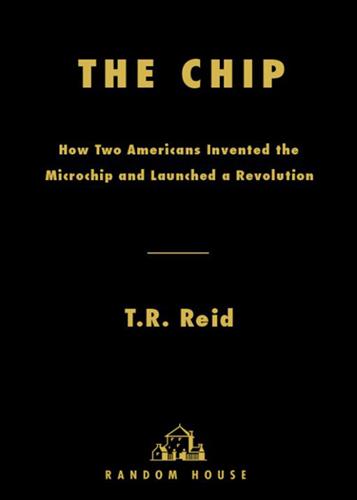
The Chip: How Two Americans Invented the Microchip and Launched a Revolution
by
T. R. Reid
Published 18 Dec 2007
As new features were added and prices plummeted sales doubled year after year. To borrow a word from Patrick Haggerty, the pocket calculator became pervasive. Within a decade after the first pocket calculator was sold in the United States, the country had more calculators than people. As Haggerty had predicted, the new microelectronic gadget created a market that had simply not existed before. Tens of millions of people who never considered purchasing an adding machine or a slide rule decided they wanted to own a pocket calculator. “How many housewives actually need to know the square root of a number?” wrote Ernest Braun and Stuart MacDonald, two English scholars who analyzed the phenomenon.
…
The electronics of the new device were so far ahead of their time that it took years to turn out the initial production models. The world’s first pocket calculator, the Pocketronic, was not introduced until April 1971—April 14, to be exact (the marketing people thought they might win the attention of taxpayers working late on Form 1040). By today’s standards, that first model was a dinosaur —a four-function (add, subtract, multiply, divide) calculator that weighed 2½ pounds and cost about $150. But it sold like crazy. You would need a fairly high-powered calculator to keep track of what happened next. Five million pocket calculators were sold in the United States in 1972. As new features were added and prices plummeted sales doubled year after year.
…
For a machine as dim-witted as a computer to solve 3 + 2, the problem must be broken down into an absurdly detailed sequence of instructions that lead the machinery through its paces, step by elementary step. If there is magic in the pocket calculator, it is not in the machinery; it is in the humans who had the wit and the patience to program the machine to do its job. To bring the point home, we can take a guided tour through the interior of the black box and watch a typical digital mechanism from the inside as it does its stuff. We’ll look at a simple pocket calculator—so simple it exists only in the pages of this book—called the Digital Ignorant Mechanism, Model I, or DIM-I for short. The design of DIM-I to be set forth here is based on the familiar four-function calculator available anywhere for $5 or so.
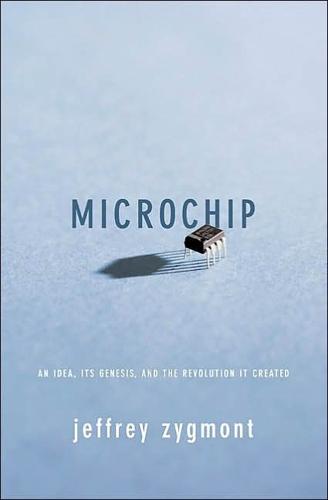
Microchip: An Idea, Its Genesis, and the Revolution It Created
by
Jeffrey Zygmont
Published 15 Mar 2003
See also National Aeronautic and Space Administration Space vehicles, 10 SperryRand, 60, 179 Sporck, Charles, 48, 107, 125-126 Sprague Electric Company, 48 Sputnik I, 10 Sputnik II, 10 Stalin, Joseph, 64 Sylvania, 53 and pocket calculators, 79 Tap test, 39 Terman, Frederick, 87 Terminals, 121 Texas Instruments (TI), 4, 9, 12-19, 22,24,53,56,58,68,70, 71,73, 75, 101, 121-122, 127-128, 173, 176,203,207,217 and bipolar chips, 95 and calculators, 134 and commercial microchips, 58 Equipment Division, 67 and integrated circuits, 46-47, 61 and microwave ovens, 149-150, 152 military contracts, 65-67 andMOS, 102 new developments at, 216 and pocket calculators, 77-80, 103 Semiconductor Components Division, 67 and semiconductors, 13 and Series 51 microchip, 59 and shift register, 85 and silicon transistors, 27 TMS-1000 microprocessor, 130, 153 and transistors, 13 Type 502 Solid Circuit, 58 Three-in-one microchip, 216 TI.
…
Ronald Curry, Intel's director of marketing, and Dennis Monticelli, a Fellow at National Semiconductor, patiently reviewed milestones in the technological progression of microchips. James Beniger, a faculty member at the University of Southern California, and Tim Lenoir, of Stanford University, IX x Acknowledgments spoke with me more generally about the role that technology plays shaping culture. Pocket calculators—revolutionary little machines not too long ago—turned out to be more essential to the story than I had foreseen. For help untangling their early history, I first found Nigel Tout, a British calculator collector and enthusiast. He sent me to Guy Ball, who is an amateur historian in the best sense of the term: his commitment to the topic comes from inveterate personal interest.
…
Patrick Haggerty, for one, irrepressible as president of far-bounding Texas Instruments, wasn't about to let his sales calls to the military stand as his last attempt to pitch ICs. Therefore in 1965 he launched a grand effort not just to use microchips but to popularize them. E 6 E Calculated Gains PATRICK HAGGERTY WANTED to use microchips to make a pocket calculator. At the time, in 1965, the idea was unprecedented. Calculators were not mass-market products, and they certainly weren't portable. They were bulky business tools used by bookkeepers and accountants, auditors, actuaries, scientists, mathematicians, engineers, and any other professional who mashed numbers.
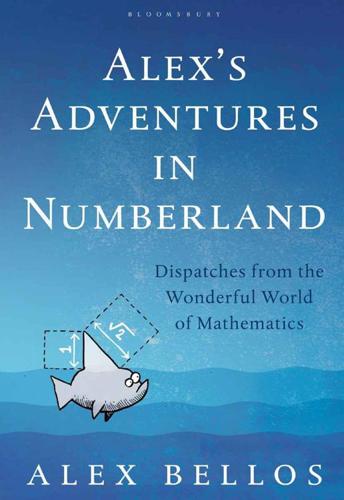
Alex's Adventures in Numberland
by
Alex Bellos
Published 3 Apr 2011
As prices dropped, calculators were seen not only as arithmetical aides but also as versatile toys. The Pocket Calculator Game Book, published in 1975, suggested many recreational activities for the high-tech electronic marvel. ‘Pocket calculators are new to our lives. Unknown five years ago, they are becoming as popular as televisions or hi-fi sets,’ it said. ‘Yet they are different in that they are not a passive entertainment but require intelligent input and definite intention for their use. We are not so much interested in what the pocket calculator can do as we are in what you can do with your pocket calculator.’ In 1977 the bestselling Fun & Games with Your Electronic Calculator included a dictionary of words that can be made using only the letters O, I, Z, E, h, S, g, L and B, which are the LED digits and when turned upside-down.
…
From then until the early 1970s, a factory in the principality produced about 150,000 of them. Herzstark lived in an apartment in Liechtenstein until he died, aged 86, in 1988. Throughout the 1950s and the 1960s the Curta was the only pocket calculator in existence that could produce exact answers. But both the Curta and the slide-rule were all but rendered extinct by an event in the history of arithmetical paraphernalia as cataclysmic as the meteorite that is said to have annihilated the dinosaurs: the birth of the electronic pocket calculator. It is hard to think of an object that has disappeared so quickly after such a long period of dominance than the slide-rule. For 300 years it reigned supreme until, in 1972, Hewlett-Packard launched the HP-35.
…
Merriam, Springfield, MA, 1833 Rademacher, H., and Torplitz, O., The Enjoyment of Mathematics, Princeton University Press, NJ, 1957 Aitken, A.C., ‘The Art of Mental Calculation; with Demonstrations’, Society of Engineers Journal and Transactions, 1954 Preston, R., ‘The Mountains of Pi’, New Yorker, 1992 CHAPTER FIVE Acheson, D., 1089 and all that, Oxford University Press, Oxford, 2002 Berlinski, D., Infinite Ascent, The Modern Library, New York, 2005 Dale, R., The Sinclair Story, Duckworth, London, 1985 Derbyshire, J., Unknown Quantity, Atlantic Books, London, 2006 Hopp, P.M., Slide Rules, Their History, Models and Makers, Astragal Press, New Jersey, 1999 Maor, E., e: The Story of a Number, Princeton University Press, NJ, 1994 Rade, L., and Kaufman, B.A., Adventures with Your Pocket Calculator, Pelican, London, 1980 Schlossberg, E., and Brockman, J., The Pocket Calculator Game Book, William Morrow, New York, 1975 Vine, J., Fun & Games with Your Electronic Calculator, Babani Press, London, 1977 (published in the US as Boggle, Price, Stern, Sloane Publishers, Los Angeles, CA, 1975) CHAPTER SIX The Mother Goose/Liber Abaci sequence of powers of seven also appears in modified form in Islamic folklore: the Angel of Mohammed is said to have 70,000 heads, each of which has 70,000 faces, each with 70,000 mouths, each with 70,000 tongues, each speaking 70,000 languages.

The Fran Lebowitz Reader
by
Fran Lebowitz
Published 8 Nov 1994
I have never taught a child to smoke before he has first taken a piece of paper and a pencil and demonstrated to my satisfaction that he can correctly divide 163 by 12. Pocket calculators are not inexpensive and, generally speaking, parents would be better off spending the money on themselves. If they must throw it away on their offspring they would do well to keep in mind that a pack of cigarettes rarely costs more than seventy-five cents. It is unnatural for anyone, let alone a child, to be able under any circumstances whatsoever to divide 17.3 by 945.8. Pocket calculators encourage children to think that they have all the answers. If this belief were actually to take hold they might well seize power, which would undoubtedly result in all of the furniture being much too small.
…
A Manual: Training for Landlords Success Without College Specialty Banking: A Numbered Account The Right of Eminent Domain Versus the Rightful Dominion of the Eminent The Family Affair: A Moral Tale Guide and Seek: I’m O.K., You’re Not A World View Notes on “Trick” SCIENCE Science The Nail Bank: Not Just Another Clip Joint Digital Clocks and Pocket Calculators: Spoilers of Youth Weak Speech Handsets: Aid for the Dull The Primary Cause of Heterosexuality Among Males in Urban Areas: Yet Another Crackpot Theory Why I Love Sleep Good Weather and Its Propensity to Frequent the Better Neighborhoods Plants: The Roots of All Evil Mars: Living in a Small Way City Limiting: The New Geography Food for Thought and Vice Versa ARTS Arts Not in the: Mood Jewelry Clothes with Pictures and/or Writing on Them: Yes—Another Complaint Soho: Or Not at Home with Mr.
…
Recently, however, it was discovered that the judges had ruled against a girl who lived on Beekman Place in favor of one who resided in the West Seventies. The judges were understandably relieved when this decision was overturned, for they, too, are firm believers in that wise old adage: Nothing succeeds like address. Digital Clocks and Pocket Calculators: Spoilers of Youth I was in certain respects a rather precocious youngster. My glance, right from the start, was fraught with significance and I was unquestionably the first child on my block to use the word indisposed in a sentence. My childhood was not, however, quite the gay whirl that one might imagine from the above statements.
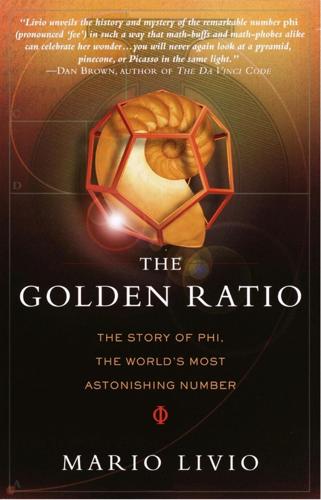
The Golden Ratio: The Story of Phi, the World's Most Astonishing Number
by
Mario Livio
Published 23 Sep 2003
Clearly, all of these associations are not only fanciful but also rather contrived (e.g., the spelling in Hebrew of the word Caesar actually omits a letter, of value 10, from the more common spelling). Amusingly, in 1994, a relation was “discovered” (and appeared in the Journal of Recreational Mathematics) even between the “number of the Beast” and the Golden Ratio. With a scientific pocket calculator, you can use the trigonometric functions sine and cosine to calculate the value of the expression [sin 666°+ cos (6 × 6 × 6)°]. Simply enter 666 and hit the [sin] button and save that number, then enter 216 (= 6 × 6 × 6) and hit the [cos] button, and add the number you get to the number you saved.
…
If we know the square of a number, we find the number itself by taking the square root. For example, if we know that the square of x is equal to 25, then x = 5 = . From d2 = 2 we therefore find that d = . The ratio of the diagonal to the side of a square is therefore the square root of 2. (A pocket calculator will show you that the value of the latter is equal to 1.41421356….) What we want to show now is that cannot be expressed as a ratio of any two whole numbers (and therefore that it is an irrational number). Think about this for a moment: What we are about to prove is that even though we have an infinite collection of whole numbers at our disposal, no matter for how long we will search, we will never find two of them that have a ratio that is precisely equal to .
…
The two solutions of the equation for the Golden Ratio are: The positive solution )…gives the value of the Golden Ratio. We now see clearly that φ is irrational, being simply half the sum of 1 and the square root of 5. Even before we go any further, we can get a feeling that this number has some interesting properties by using a simple scientific pocket calculator. Enter the number 1.6180339887 and hit the [x2] button. Do you see something surprising? Now enter the number again, and this time hit the [1/x] button. Intriguing, isn't it? While the square of the number 1.6180339887… gives 2.6180339887…, its reciprocal (“one over”) gives 0.6180339887…, all having precisely the same digits after the decimal point!
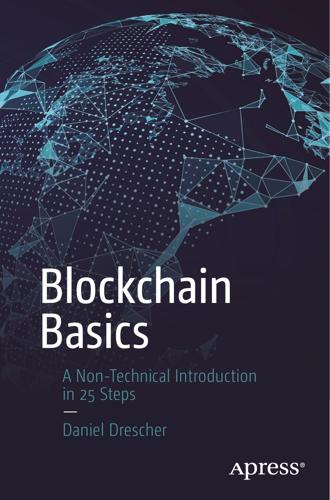
Blockchain Basics: A Non-Technical Introduction in 25 Steps
by
Daniel Drescher
Published 16 Mar 2017
For example, can you remember how expensive a pocket calculator, a PC, or a mobile phone was 30 years ago? Nowadays, pocket calculators are given away as marketing goodies, and computers with magnitudes more power than the computers used in the first NASA space programs are affordable on a pocket change budget. This is mainly due to the automation and standardization in the production of computer chips and semiconductors. We can expect that trust and secure initiation, execution, and settlement of business interactions will become as inexpensive and ubiquitously available as pocket calculators due to the automation and standardization introduced by the blockchain.
…
Drescher, Blockchain Basics, DOI 10.1007/978-1-4842-2604-9 250 Index Blockchain ( cont. ) Combined hashing, 76–77 orderly, 131–132 Commercial concepts, 231 page dependency explicit, 113–114 Common trunk, 176 page reference numbers, 120 purpose, 191 Comparing data reference numbers, 117 goal, 81 replace numbers, 116 idea, 82 replace transaction, 128–129 works, 82 stores transactions, 120–121 Compensating peers, 186, 232 transaction data, 127 Compensation, 191 layers, 192 Complementary keys, 96–97 technical concepts, 190–191 technology-suite, 200 Compulsory data, 139 Book Computer science, 237 get rid of spine, 117 Computers gossip, peer-to-peer systems page challenge, 146 numbers, 114 distribute new information, 149 order numbers, 115 establish new connections, 149 preceding, 114 goal, 146 reference numbers, 117 introducing new peers, 147 replace numbers, 116 keep connections alive, 149 schematic illustration, 114 news, 147 overview, 147–148 C small talk, 147 Card catalogs, 112 Conceptual evolutions access rights, 238 CDs, 19–20 consensus, 239–240 Centralized software systems, 11, 15–16, 230 data structure, 241 Chain inventory data, 241 consequences, authoritative privacy, 239 clarify ownership, 175 transactions, 240–241 common trunk, 176 Concrete applications, 225–226, 228 consistency, 176–177 Connecting pages, 118 orphan blocks, 174 reclaim reward, 175 Consensus, 167, 236, 239–240 robustness, 177 logic, 199 transactions reprocessing, 175 Content pages, 118, 120 heaviest-chain-criterion, 173–174 Content reference numbers, 118, 120 longest-chain-criterion, 168–169, Conventional mail, 93 171–172 Copying digital goods, 51–52 Cloakroom tickets, 83, 86 Cryptocurrencies, 227 Clock-pulse generator, 166 Cryptography, 46, 59 Collective decision-making problems currency, 232 characterize, 167 hash functions, 72 conditions, 167 collision resistant, 73 Collision resistant, 73 combined hashing, 76–77 Combination lock, 89 deterministic, 72 Index 251 hierarchical hashing, 78 Dishonest nodes, 137 independent hashing, 75 Disintermediation, 22, 242 one-way function, 73 pseudorandom, 73 Distributed consensus, 167, 191 repeated hashing, 76 Distributed peer-to-peer system, 185, 230 sequential hashing, 77–78 metaphor used, 191 webpage, 73–74 purpose, 191 hash value, 71, 74–75, 82, 86, 190 Distributed software money, 186–187 systems, 217–218, 229 Cryptology system, 94 communication, 13 asymmetric, 96–97 complexity, 14 challenge, 94 computing power, 12 goal, 94 coordination, 13 idea, 94–95 cost reduction, 12 metaphor, 93 defined, 11 symmetric, 96 incremental growth, 13 terminology, 95–96 mixing centralized and, 15–16 Cypher text, 95–97 networks, 14 peer-to-peer systems, 23–24 D reliability, 12 security, 14 Data, changes in Double spending problem, 50 goal, 82 copying digital goods, 51–52 idea, 82 peer-to-peer systems, 51–53 works, 82–83 real estate, 50 Data integrity, 6 solve, 52 Data structure, 34, 241 Decentralization, 236 E Delivery of messages, 148 E-mail, 94 Detecting changes, comparing data, 83 F Deterministic, 72 Fingerprints, 71, 73 Digital assets, 227 Formal correctness, 67 Digital equivalent, 95 Four versions, 216 Digital identity, 227 Functional\non-functional aspects, 5–6 Digitalization, 20, 22 G Digital signatures, 100, 190, 196, 199 create, 105 Generic application, proof of identify fraud, 106–107 authorship, 226 message verification, 105–106 existence, 225 requirements, 107 identity, 226 transaction data nonexistence, 225 combinations, 108 order, 225 create, 107 ownership, 226 verify, 108 time, 225 Dishonest behavior, 162–163 Governmental projects, 247 252 Index H goal, 136 idea, 137 Handwritten signatures, 103 metaphor, 135–136 Hash Implementation layer, 4–5, 10 functions, 72 functional aspects puzzle, 142 consensus logic, 199 blockchain-data-structure, 140 ownership logic, 195 combination lock, 89 peer-to-peer architecture, 198 difficulty level, 91 storage logic, 197–198 elements, 89 transaction processing logic, hash value, 90 196–197 metaphor used, 191 transaction security, 195–196 nonces, 91 nonfunctional aspects purpose, 191 consistent, 194 reward, 156 integrity, 194 role, 178–179 resilient, 194 schematic illustration, 90 secure, 194 speed competition, 158 works, 91–92 Independent hashing, 75 references, 190 Integrity, 5–6, 30–31, 46, 52–53 after data alteration, 85 Intermediaries, 21 invalid, 85 Internet, 147 refers, 84 tree-like fashion, 88 Inventory data, 64, 241 valid, 84 J Heaviest-chain-criterion, 173–174 Hexadecimal numbers, 74 Jobs, loss of, 246 Hierarchical hashing, 78 K I Knitting stitches, 123 Identical working rhythm, 159 L Identification, 43–44 Large-scale commercial projects, 247 Immutability, 191 Ledgers, 41–42, 44–45 aristocratic family, 135 distribute, 60 blockchain-data-structure double spending problem, 51–52 all-or-nothing approach, 138 new transactions, 60–61 compulsory data, 139 transaction history, 61 computational costs, 138 untrustworthy environment, 60 costs of manipulating, 141–142 creating new block, 139–140 Legal acceptance, lack of, 209 making manipulations stand out, 138 Limited enthusiast projects, 246 validation rules, 140 Linked list, 87 works, 141 Liquor shop, 42, 43 challenge, 136 data store in real world, 142 Longest-chain-criterion, 168, 170–173 defined, 137 Long-term accomplishments elements, 137 automation, 243 Index 253 commodity, 244 Ordering catalog, 118–120 cost reduction, 243 Orphan blocks, 174 disintermediation, 242 processing speed, 243 Ownership security protocols, 244 challenge, 64 standardization, 243 concepts, 42 streamlining process, 243 describe, 59 technology awareness, 244 foundations, 41–42 goal, 64 M lawful owner, 104 logic, 195 Mailbox, 93–94, 99 management, 35–36 Mail, conventional, 93 protecting, 59 transfer, 65 Malicious peers, 31 witnesses, 40 Merkle root, 129–130 Merkle tree, 88, 120–121, 128, 141 P Message, 148 Page reference numbers, 120 delivery, 166 Paved paths, 165 passing, 191 Paxos, 240 Micropayments, 227 Payments, 227 Mobile phone application vs. implementation, 4 Payment system, 10 example of layers, 5 Peer control, 158 functional vs. nonfunctional aspects, 5 Peer-to-peer architecture, 198, 217 integrity, 6 Peer-to-peer systems, 15 mental partition, 4 bank account, 21–22 Multiple-choice tests, 153–154 centralized, 23 Music industry computers gossip, 146–150 CDs, 19 distributed software digitalization, 20 systems, 14, 23–24 Napster, 20 double spending problem, 51 peer-to-peer systems, 21 goals, 207 studios, 20 integrity, 30 ledgers, 61 N malicious peers, 31 managing ownership, 190 Networks, 14 music industry, 20–21 Nodes, 11, 15, 23, 30, 60 technical failures, 31 Nondiscrimination, 236 trust, 30 umbrella term, 34 Notary services, 227 Performance-related compensation O consequences, 154 multiple-choice tests, 154 One-way function, 73 rules, 154 Openness, 236 Permissioned and permissionless Open peer-to-peer system, 185 blockchains, 216 254 Index Ping, 149 Semantic correctness, 67 Pocket calculators, 244 Sensitive manner, data changes in Pong, 149 referring, 83–85 storing data, 86–88 Preceding page, 114 Sequential hashing, 77–78 Privacy, lack of, 206, 245 Small talk, 147 Private blockchains, 215 Smart contracts, 240–241 Private key, 98–100, 206–207 Software architecture, 10 Protecting ownership, 59 centralized systems, 11 Pseudorandom, 73 distributed systems, 11 Public blockchains, 215 Speed competition, 158 Public key, 98–99 Standardization, 243 Public-private-key cryptography.
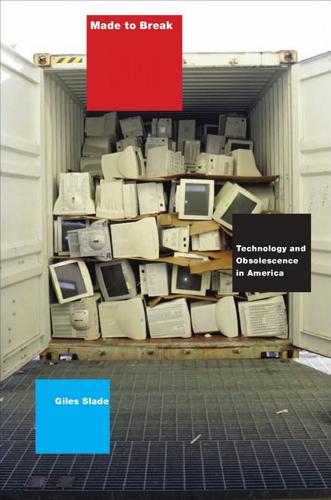
Made to Break: Technology and Obsolescence in America
by
Giles Slade
Published 14 Apr 2006
Every year, smaller and smaller electronic devices became available for less and less cost, and these devices became at least twice as capacious and twice as fast as their immediate predecessor, effectively quadrupling the value of each generation of chip.15 The speed at which this technological obsolescence occurred became obvious during Apollo’s last fli ht in 1975, when American astronauts aboard this joint Apollo-Soyuz docking mission carried with them programmable HP-65 pocket calculators that were several times more powerful than the capsule’s inboard computer designed less than a decade before.16 But Moore’s Law is only part of the much bigger picture of the history of computing, and the forces driving the acceleration of obsolescence and e-waste are far older than integrated circuits.
…
In 1971 just months after Canon and Texas Instruments introduced the Pocketronic in America, another Texas fi m, Bowmar, unveiled the four-function 901B calculator, the firs truly pocketsized calculator.The Bowmar Brain,as it was known, was not very powerful, but it was entirely American-made and was also probably the firs consumer device to use a light-emitting diode display, although LED alarm clocks and digital watches would not be far behind.24 Bowmar simultaneously manufactured a second calculator, the C110, under contract to Commodore. The next few years saw an avalanche of increasingly powerful, sophisticated, and cheap pocket calculators. Commodore introduced successive models, the Minuteman 1 and 2, between January and August of 1972. Intel released its 8-bit processor in April of the same year. By July, Hewlett Packard was using the new Intel chip in its firs scientifi calculator, the HP-35, which retailed for $395. With its capacity to perform logarithmic and trigonometric functions faster and more accurately than a slide rule or any other analog device, the HP-35 was a revolution for engineers and scientists.25 That year also saw the debut of the Aristo M27, a four-function calculator like the Bowmar Brain that used TI chips.
…
In 1985 the coin-operated arcade market collapsed as completely as the home video market had in 1977.By this time, video games were ubiquitous. Coca-Cola had even unveiled a series of vending machines with built-in screens allowing customers to play video games after they had purchased a soft drink. By 1983 Nintendo’s firs portable video game product, Game & Watch, a small pocket-calculator-size gaming device that also told the time, had sold millions of units (many of them counterfeits) throughout Asia. In light of its success in the Pacifi Rim, Nintendo decided to export Game & Watch to the United States, but after substantial losses Nintendo quit distributing them in 1985. In 1988, with the introduction of an improved Nintendo Entertainment System (NES), the manufacture of expensive electromechanical pinball machines declined substantially,and in 1989 Nintendo delivered the critical blow.61 Game & Watch grew out of Nintendo engineer Gunpei Yokoi’s observations about the failure of Milton Bradley’s Microvision, launched in 1979.

Halting State
by
Charles Stross
Published 9 Jul 2011
But apart from that…everything out here on the street looks the same, near enough, but it doesn’t work the same. They had pocket calculators back then, and I remember my dad showing me what they used before that—books of tables, and a thing like a ruler with a log scale on it, a slide-rule. Do you have a pocket calculator? Do you use one to do your job, your old job?” “No, of course I—” She waves at the book-shop opposite. “I’m a forensic accountant! What use is a pocket calculator?” “Well, that’s my point in a nutshell. We used to have slide-rules and log tables, then calculators made them obsolete.
…
The mess defederalization has left the country in has really come home to roost this decade: What the cooked books give, the cooked books taketh away. Isn’t that the way the world works? Breakfast is a hastily munched Kellogg’s bar washed down with a glass of organic apple juice. You grab the latest copy of Accounting, Auditing and Accountability and stuff it in your briefcase, along with the usual: pen, iPod, your father’s antique pocket calculator, and a dog-eared copy of Tobler’s manual of sword-fighting that you borrowed from Matthew. You visit the bathroom briefly for a smear of lipstick and eyeliner, then you’re out the door. Early May used to be the chilly tail-end of spring, according to Mum. And it certainly used to be cooler.

Surviving AI: The Promise and Peril of Artificial Intelligence
by
Calum Chace
Published 28 Jul 2015
Today’s computers use processors made of silicon, but in future other materials like graphene may come into play. (“Computer” is an old word which pre-dates the invention of electronic machines by several centuries. Originally it meant a person who calculates, and in the early twentieth century companies employed thousands of clerks to spend long and tedious days doing jobs which today’s pocket calculators could do in moments.) Software is a set of instructions that tell electronic signals how to dance together inside a machine. Whether intelligence resides in the machine or in the software is analogous to the question of whether it resides in the neurons in your brain or in the electrochemical signals that they transmit and receive.
…
We have good reason to believe that overall, we are the smartest species on this planet at the moment, and we have achieved great things. As a result, the future of all the other species on Earth depends largely on our decisions and actions. Yet we have already been overtaken – and by a very long way – by our own creations in various limited aspects of intelligence. Humble pocket calculators can execute arithmetic processes far faster and more reliably than we can. Granted they cannot walk around or enjoy a sunset, but they are smarter than us in their specific domain. Likewise chess computers, and self-driving cars. More generally, we humans are subject to a range of cognitive biases which mar our otherwise impressive intelligence.

Gambling Man
by
Lionel Barber
Published 3 Oct 2024
He later discovered that a second U-boat had been attacked and sunk off Singapore. Not one of the crew, including a colleague carrying a copy of the original German radar blueprint, survived.15 After the war, the man known as ‘Dr Rocket’ joined Sharp, the Japanese consumer electronics giant, where he developed the first electronic pocket calculators. Later he played a key role in the creation of the world’s first microprocessor, the Intel 4004 chip, by introducing Intel’s co-founder Robert Noyce to a Japanese business customer needing an advanced microchip. After that favour, Sasaki was given red-carpet treatment in Silicon Valley. He became a mentor to the next generation of American entrepreneurs driving the technology revolution, including a young man called Steve Jobs, who went on to found Apple Computer.
…
It was a clunky prototype only, a black-coloured box the size of a small notebook with fat keys and a liquid crystal screen. Masa, showing no sign of nerves, demonstrated how the machine spoke English in response to clicked-on words and later translated them into Japanese on screen. Sasaki quickly grasped the translator’s potential if combined with Sharp’s range of user-friendly pocket calculators. He offered Masa ¥20m ($200,000) on the spot, with more to come once Masa developed five language libraries, including French and German versions of the software. The package was ultimately worth $1m (¥100m),fn1 if Masa delivered the additional language libraries.7 On his return to Berkeley, Masa instructed the Space Sciences Lab team to improve the prototype pocket translator as fast as possible.
…
Despite all these barriers, visible and invisible, changes were under way in Japan which presented an opening to a techno-enthusiast like Masa. After the second oil price shock in 1979, Japanese manufacturers were making great efforts to save energy and reduce the size of the cars, TVs and high-quality consumer electronics which had powered the country’s post-war success. Everything was becoming smaller and more affordable: pocket calculators, video games and, crucially, personal computers. The arrival of NEC’s PC-8001 in 1979 inaugurated the personal-computer age in Japan. Alongside miniaturization, Japan was moving rapidly towards digitization. Most consumer products such as washing machines came equipped with ‘micon’, the microcomputers or microcontrollers lodged in control panels which scheduled or automated machine tasks.

The Battery: How Portable Power Sparked a Technological Revolution
by
Henry Schlesinger
Published 16 Mar 2010
The whole enterprise lay dormant until 1968 when a Japanese television crew filmed Heilmeier demonstrating his proof of concept LCD for a documentary called Firms of the World: Modern Alchemy. A year later an engineer at Sharp Corporation recognized the technology as a possible solution to a pocketable calculator display on the drawing boards. RCA, apparently still not interested in the technology, offered little assistance. So, with the American company proving uncooperative and virtually no current material published on the obscure field, the engineers at Sharp did what any good engineer would do—they watched the videotape of Heilmeier’s demonstration.
…
Although all the bottles at the lab had their labels conveniently turned from the camera, the engineers were able to gather enough clues to at least begin their research and somehow managed to perfect the technology within a relatively short amount of time. Then, in May of 1973 Sharp introduced the Elsi Mate EL-805 pocket calculator to the world. The unit, which housed five ICs, was less than an inch thick and weighed just 7.5 ounces. But the real surprise came in the fact it could run for a hundred hours on a single AA battery. That is to say, power consumption was estimated at 1/9000 of other battery-powered calculators on the market.
…
T., 271 Branly, Édouard, 189 Brattain, Walter, 244 Braun, Karl Ferdinand, 207, 259 Breguet, Abraham-Louis, 99, 112, 145 Breguet, Louis-François, 112, 145 broadcasting, 195–96, 205, 217–24 early, 217–24 Brown, Thomas, Pseudodoxia Epidemica, 18 Brugnatelli, Luigi, 65–66 Brush Arc Lighting Company, 153 Bunsen, Robert Wilhelm Eberhard, 95–96 Bunsen battery, 96 Burgess, Charles, 215 Burgess Battery Company, 213, 215 Bush, Vannevar, 225, 236–37, 281 “As We May Think,” 236, 237 “Science the Endless Frontier,” 236, 237 Busicom, 268 Byron, Lord, 62, 64, 73, 120 Don Juan, 64 cable, transatlantic, 119–23, 123, 124–27 cadmium, 239 Calahan, Edward A., 138–39 calculators, pocket, 267–68 calculus, 76 Callan, Nicholas, 94–95, 142 call boxes, electronic, 131 Canon Pocketronic, 268 carbon, 142, 143, 147, 148 Cardano, Girolamo, The Subtlety of Things, 11 Carnegie, Andrew, 133 Carroll, Lewis, 171 catered electricity, 154 cathode, 77, 86, 87 cathode ray tube (CRT), 177–78, 178, 266, 267 Cave, Edward, 33–34 Cavendish, Henry, 28 cell phone, 116, 130, 146, 232, 255, 273, 275, 278 Chaperon, George, 172, 179 Chappe optical telegraph, 98–99, 100, 103, 112, 123 Charterhouse, 22 chemistry, 16, 19, 50, 58–59, 70–71 sets, 200 Chicago, 155, 157 China, 5, 15 circuit boards, 237–39, 249 cities, 164 lighting, 153 Civil War, American, 127, 129–30, 135–36, 188 Clark, Josiah Latimer, 133–34, 142 clocks, electric, 180 coal, 151, 152 cocktail, electric, 167–68 code, 112, 132 Morse, 106–107, 112, 191, 195, 196, 206, 209 codebooks, 112 coffins, electric doorbells for, 132 coherer, 189–91, 199, 206, 209 Cold War, 246–47, 263 Coleridge, Samuel Taylor, 56, 61, 62, 78 collar, electric, 167 Collinson, Peter, 29–30, 33 Colt, Samuel, 107–108 Columbia dry cell, 179–80, 180, 181 computer chip, 263–69 computers, 178, 195 early, 202, 247–48, 262–69 notebook, 255, 273, 275, 277 condensatore, 44–45 Congress, U.S., 90–91, 107, 109, 110, 167, 248 Conrad, Frank, 218 constant battery, 67 consumer electronics, 131–32 of 1920s–1930s, 214–24 of 1950s–1960s, 251–58 of 1970s–1990s, 267–73 postwar, 239–44 twenty-first century, 274–78 Consumer Reports, 254 Cooke, William Fothergill, 103–105 copper, 66, 67, 82, 83, 86, 88, 91, 126, 127, 139, 140, 163 corsets, electric, 164 cost, battery, 96 Cowen, Joshua Lionel, 182–83 Crookes, Sir William, 187 Cruickshank, William, 66, 67, 81, 139 crystals, 206–208, 232 d’Alibard, Thomas-François, 35–36 Daniell, John F., 66–67, 68 Daniell battery, 66–67, 67, 122, 127, 140 Danko, Stanislaus F., 249 Darwin, Erasmus, 37 Datamath, 268 Davenport, Thomas, 91–94 Davenport motor, 92–94 Davidson, Robert, 95 Davy, Humphry, 56–63, 69, 71–76, 77, 271 Elements of Chemical Philosophy, 61, 63 D cell battery, 181–83, 219, 233, 250, 270 Defense Advanced Research Projects Agency (DARPA), 267 deflagrator, 86 de Forest, Lee, 208–209, 211 De la Rue, Warren, 147 demonstrations, scientific, 18, 22, 54, 57–58, 107, 108, 192, 210 Dickens, Charles, 73 digital camera, 271 Dolbear, Amos, 188 doorbells, 131, 132, 134, 143, 153 dry cell, 143, 160, 179–80, 180, 181, 181, 190, 199, 213, 249, 271 Du Fay, Charles-Francois de Cisternay, 23, 24 and n., 37 Dunwoody, Henry Harrison Chase, 207 Duracell, 224, 234 dynamos, 151, 156, 211 Edison, Thomas Alva, 78, 132, 137, 141–42, 147, 148–53, 156, 169–75, 179, 188, 189, 200, 208, 210, 250 electric car, 173–75 electric lighting, 17–53, 173 electric pen, 170, 170, 171 media persona, 149–51 “Edison effect,” 179 Ediswan Company, 147, 208 Edmundson, Thomas, 85 Einstein, Albert, 4, 217 Eisler, Paul, 228 Electrical Experimental, 212 Electrical Review, 165, 167, 168 Electrical World, 207 electric candle, 148 electric car, 173–75, 281 Electric Girl Light Company, 154–55 electricity, 6, 10, 11–15, 126, 200–201 animal, 39–44, 45, 47, 50, 53, 162 bimetallic, 43–50, 59 early–mid nineteenth century, 46–50, 51–68, 69–96, 97–131 early–mid twentieth century, 175, 198–212, 213–50 eighteenth century, 20–38, 39–45 mid–late nineteenth century, 108–130, 131–40, 141–68, 169–94 mid–late twentieth century, 236–50, 251–73 standardized measurement of, 128–29 telegraph and, 97–130 electric lighting, 143, 146–57, 200, 221, 243 battery-powered, 151–55, 180–83 Edison and, 147–53, 173 patents, 147, 151 electric shock, 25–29, 53–55 electric whirl, 21 Electrobat, 174 Electro Importing Company, 198, 200, 203, 223, 243 electrolysis, 58, 77, 271 electromagnetism, 74–76, 80–96, 178 industrial, 85–88, 91–96 telegraphy, 102–130 electrometer, 29, 44–45 Electronics magazine, 265 electrons, 3, 14, 26, 86, 144–45, 178–79, 196, 244–45 discovery of, 178–79 electrophorus, 42 electroplating, 65–66 electrostatic machines, 19–38, 40, 49 electrotherapy, 158, 162–67 Elsi Mate pocket calculator, 267–68 Emerson, Ralph Waldo, 51, 61 Energizer, 179, 241, 243 engineering, 38 ENIAC, 247–48, 265 Enigma machine, 234 Europe. See specific countries and inventions Evans, Mathew, 148 Ever Ready, 182, 183 Eveready, 179, 183, 214–15, 220, 229, 231, 249, 252, 272 Eveready Hour, The, 220 experimentation, 6, 11–38, 78, 186 early–mid nineteenth century, 46–50, 51–68, 69–96, 97–131 early–mid twentieth century, 198–212, 213–50 human, 53–56 mid–late nineteenth century, 108–130, 131–40, 141–68, 169–94 trial-and-error, 149 See also science; specific inventors Fairchild Semiconductor, 264 Faraday, Michael, ix, 69–78, 79, 80, 81, 87, 120, 121, 126, 149, 176, 177, 186, 210, 223 Experimental Researches in Electricity, 149 First Law of Electrolysis, 239, 249, 271, 272 motor, 75, 75, 76–77, 92 “farm radios,” 224 Fessenden, Reginald, 209–240 Field, Cyrus, 118–21, 123, 126 financial industries, 106, 116, 219 speculation, 134–39 telegraph and, 133, 134–39 Fitzgerald, F.
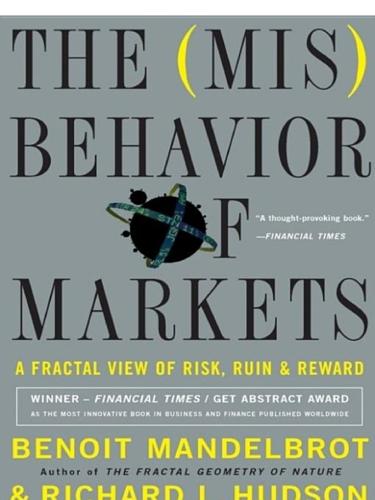
The Misbehavior of Markets: A Fractal View of Financial Turbulence
by
Benoit Mandelbrot
and
Richard L. Hudson
Published 7 Mar 2006
Because it can now fit into more crannies of the curve, it measures more distance—in fact, four-thirds as much. Continue the process, shrinking the ruler and measuring. At each stage the length measured is multiplied by the same ratio: 4 to 3. The fractal dimension is defined as the ratio of the logarithm of 4 to the logarithm of 3. A pocket calculator converts that: 1.2618. ... This makes intuitive sense. The curve is crinkly, so it fills more space than would a one-dimensional straight line; yet it does not completely fill the two-dimensional plane. Random fractal curves. So far, all the fractals in this gallery have been regular and, once you knew the rule, the constructions were exactly repeatable and the results, predictable.
…
It is, in essence, drawing a straight line through the cloud of data points to show an underlying “average” trend—if one actually exists. As will be seen, this method is used with reckless abandon in financial analysis. The key parameters, and in the regression equation are easily calculated with a pocket calculator and a standard formula. 36 “But each has the same mathematical formula…” The formula for the bell curve is a somewhat forbidding function of one of those powerful mathematical constants that crop up in the most unlikely places. This constant, e, is an irrational number, with infinitely non-recurring digits, that starts as 2.7182.
…
If you had followed …” Reported in James 2003, 2004. 85 “In computer simulations…” De Grauwe and Grimaldi 2003. 91 “Logarithms rescale everything” Here are a few comments for readers who want a quick reminder of logarithms. The decimal logarithm, a function now automated by a button on many pocket calculators, takes the number you input and writes it in a different form. Roughly speaking, it is an order of magnitude: the part of the logarithm before its decimal point is the number of digits in the input, minus one. When the input lies between 0 and 1, this rule generalizes to yield a negative output.
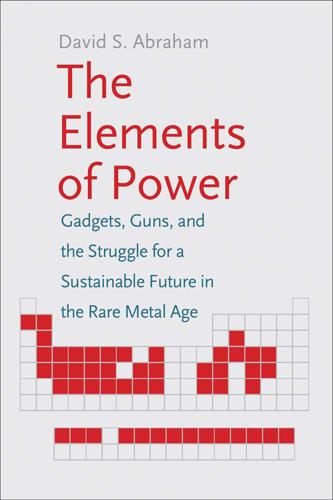
The Elements of Power: Gadgets, Guns, and the Struggle for a Sustainable Future in the Rare Metal Age
by
David S. Abraham
Published 27 Oct 2015
David Rowlands, “The Push-Button Abacus,” Design 290 (February 1973): 36–37, available at vads.ac.uk/diad/article.php?title=2&year=37&article=d.290.27. 8. Alice Rawsthorn, “Farewell, Pocket Calculator?” New York Times, March 4, 2012, www.nytimes.com/2012/03/05/arts/design/farewell-pocket-calculator.html. 9. Viktor Mayer-Schönberger and Kenneth Cukier, Big Data: A Revolution that Will Transform How We Live, Work, and Think (Boston: Houghton Mifflin Harcourt, 2013). 10. Rowlands, “The Push-Button Abacus”; David A. Bell, “Napoleon in the Flesh,” MLN 120, no. 4 (September 2005): 711–715; “Pocket Calculators Add up to a Big Market,” New Scientist, Google Books, July 20, 1972, books.google.co.uk/books?
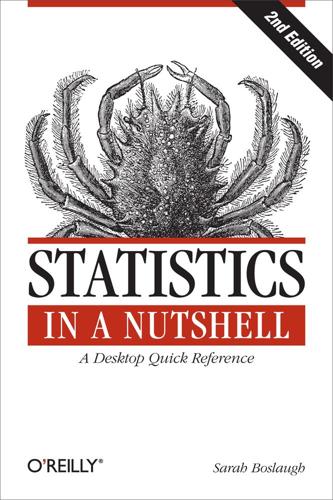
Statistics in a Nutshell
by
Sarah Boslaugh
Published 10 Nov 2012
If the raw data value is 4, the transformed value is 2 because √4 = 2. The log transformation computes the natural log of each value, so if the raw data value is 4, the transformed value is 1.386 because ln(4) = 1.386. Either transformation can be accomplished easily with statistical software, a pocket calculator, or a spreadsheet program. Figure 3-25 displays a right-skewed data set. Figure 3-26 shows the same data after a square-root transformation (the values graphed are the square roots of the data in Figure 3-25), and Figure 3-27 shows the same data after a log transformation (the values graphed are the natural logs of the data displayed in Figure 3-25).
…
It’s not cheating to plant several questions with colleagues you know will be in attendance in case the discussion is slow to get started. This is also a good way to direct the discussion toward points on which you would like to elaborate further. Appendix A. Review of Basic Mathematics You don’t need to be an ace in mathematics to learn statistics, and nowadays pocket calculators and computer programs can do much of the calculation drudgery for you. However, a good understanding of how numbers work, including the basic laws of arithmetic and algebra, is a prerequisite to being able to reason statistically. Although anyone can learn to churn out calculations, if you don’t understand the meaning of the numbers thus produced, your efforts can be useless or counterproductive.
…
The following principles hold for logarithms of whatever base (the base is signified by b in these examples): logb 1 = 0 because b0 = 1 (because any number to the 0th power = 1) logb b = 1 because b1 = b (because any number to the first power equals itself) logb bx = x (because by definition the log of bx is x if the base is b) where x > 0 (because logb x is the exponent to which you raise b to get x) The following properties of logarithms are also useful in statistics: logb MN = logb M + logb N (The logarithm of a product is the sum of the logarithms.) logb M/N = logb M − logb N (The logarithm of a quotient is the difference of the logarithms.) logb Mp = p logb M You can demonstrate these principles to yourself by using a pocket calculator. For instance, using natural logs: ln (2 × 4) = ln 2 + ln 4 = 0.693 + 1.386 = 2.079 ln (2/5) = ln 2 − ln 5 = 0.693 − 1.609 = −0.916 ln 23 = 3 ln 2 = 3(0.693) = 2.079 Note that logarithms for numbers between 0 and 1 are negative, and logarithms for numbers less than 0 are undefined. (You’ll get an error message on your calculator if you try to find ln − 1.)

The Innovators: How a Group of Inventors, Hackers, Geniuses and Geeks Created the Digital Revolution
by
Walter Isaacson
Published 6 Oct 2014
It could do only four tasks (add, subtract, multiply, and divide) and was a bit heavy (more than two pounds) and not very cheap ($150).21 But it was a huge success. A new market had been created for a device people had not known they needed. And following the inevitable trajectory, it kept getting smaller, more powerful, and cheaper. By 1972 the price of a pocket calculator had dropped to $100, and 5 million units were sold. By 1975 the price was down to $25, and sales were doubling every year. In 2014 a Texas Instruments pocket calculator cost $3.62 at Walmart. MOORE’S LAW That became the pattern for electronic devices. Every year things got smaller, cheaper, faster, more powerful. This was especially true—and important—because two industries were growing up simultaneously, and they were intertwined: the computer and the microchip.
…
One aspect of innovation is inventing new devices; another is inventing popular ways to use these devices. Haggerty and his company were good at both. Eleven years after he had created a huge market for inexpensive transistors by pushing pocket radios, he looked for a way to do the same for microchips. The idea he hit upon was pocket calculators. On a plane ride with Jack Kilby, Haggerty sketched out his idea and handed Kilby his marching orders: Build a handheld calculator that can do the same tasks as the thousand-dollar clunkers that sit on office desks. Make it efficient enough to run on batteries, small enough to put into a shirt pocket, and cheap enough to buy on impulse.
…
“The more I learned about this design, the more concerned I became that Intel may have undertaken more than it was prepared to deliver,” Hoff recalled. “The number of chips and their complexity was much greater than I had expected.” There was no way Intel could build them at the agreed price. Making matters worse, the growing popularity of Jack Kilby’s pocket calculator was forcing Busicom to cut its price even further. “Well, if there’s anything you can think of to simplify the design, why don’t you pursue it,” Noyce suggested.52 Hoff proposed that Intel design a single logic chip that could perform almost all of the tasks that Busicom wanted. “I know this can be done,” he said of the general-purpose chip.
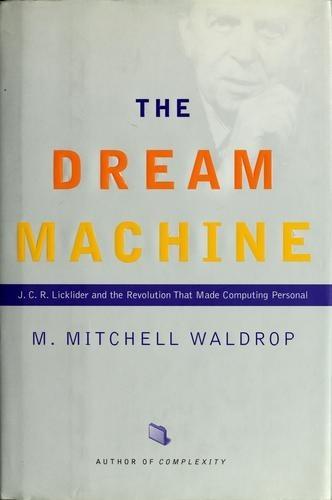
The Dream Machine: J.C.R. Licklider and the Revolution That Made Computing Personal
by
M. Mitchell Waldrop
Published 14 Apr 2001
In January 1974, moreover, Hewlett-Packard had followed up that success LICK'S KIDS 429 with the first fully programmable pocket calculator, the $795 HP-65, which could store short sequences of keystrokes and play them back (indeed, the H P- 65 was explicitly introduced as a "personal computer"). By the middle of the decade, competitors were pouring into the field, prices were dropping precipi- tously, and the pocket-calculator market was booming. Certainly those devices set the stage for personal computers, the computer historian Paul Ceruzzi has noted: "Pocket calculators, especially those that were programmable, unleashed the force of personal creativity and energy of masses of individuals."
…
Nonethe- less, Olsen's attitude explains why DEC didn't take the lead in personal com- puters, even though it had in place a corporate philosophy and a corporate culture that might have allowed it to do so easily. Alternatively, there was another route to personal computing that to modern eyes seems just as obvious: simply combine one of the new one-chip micro- processors with the ubiquitous pocket calculator, thus creating a "microcom- puter." And indeed, Hewlett-Packard had already established quite a bit of momentum in that direction, starting with the introduction of its $400 HP-35 in early 1972. Customers loved the device. Simple four-function, arithmetic calcu- lators were one thing; the $250 Bowmar Brain had been a big seller just the pre- vious Christmas.
…
At this late date it's impossible to say exactly where this notion came from, though a big part of it was undoubtedly the MIT vision of information utilities, plus the resulting computer-utilities boom. Among the computer cognoscenti, at least, the 1960s had been rife with speculations about "home information sys- tems" linked to data centers via telephone lines or antennas. Other possible in- fluences included the hobbyists' personal experience with minicomputers and pocket calculators, as well as the rumors they'd heard about the wonders at PARC, and the presence of all those thousands of students who had graduated from top computer schools such as MIT, Stanford, Carnegie Mellon, and Berke- ley-which also happened to be the top ARPA sites. But wherever the notion came from, it was obviously in the air by January 1975.

The Passenger: Berlin
by
The Passenger
Published 8 Jun 2021
One day I did go in early and leave late, though … long enough to witness the changeover from the day shift (those who had been here for many hours) to the night crew. THE SHIFT CHANGEOVER BEGAN AT 9 P.M. To my right at the bar sat a man in his late forties with light-coloured hair wearing a beige jacket. In front of him was a spiral notepad, a newspaper and a pocket calculator. He entered figures into the device, murmured, tapped, noted and muttered ‘OK’. Every now and then he took a sip from his water glass. To my left sat some older men with half-drunk beers. One of them would periodically press his lips together, mumble something and nod a lot. Another rested on his arms clasped over his round belly.
…
When I returned on 28 December the city was empty and abandoned, as it always is at this time of year. The light was on in the Kneipe below my apartment, as it always is. Over the course of the day the regulars came, but fewer people wandered in at night. People were drinking, as always. The gentleman with the pocket calculator was surely sitting alone at the bar, as perhaps were the coughing ladies. Unexpectedly, nothing was happening. The newcomers were at home with their families, and so the people who stayed had room. No shift changeover tonight, for sure. As I walked by the Kneipe in the late afternoon, I saw that a poster had been stuck up advertising the New Year’s Eve party.
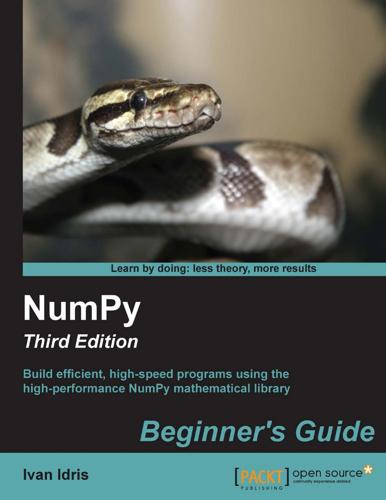
Numpy Beginner's Guide - Third Edition
by
Ivan Idris
Published 23 Jun 2015
To do this, generate an array with values 1 to 8 and call the prod() functon on it: b = np.arange(1, 9) print("b =", b) print("Factorial", b.prod()) Check the result with your pocket calculator: b = [1 2 3 4 5 6 7 8] Factorial 40320 This is nice, but what if we want to know all the factorials from 1 to 8? 2. No problem! Call the cumprod() method, which computes the cumulatve product of an array: print("Factorials", b.cumprod()) It's pocket calculator tme again: Factorials [ 1 2 6 24 120 720 5040 40320] What just happened? We used the prod() and cumprod() functons to calculate factorials (see ndarraymethods.py ): from __future__ import print_function import numpy as np a = np.arange(5) print("a =", a) print("Clipped", a.clip(1, 2)) a = np.arange(4) print(a) print("Compressed", a.compress(a > 2)) b = np.arange(1, 9) print("b =", b) print("Factorial", b.prod()) print("Factorials", b.cumprod()) Missing values and Jackknife resampling Data ofen misses values because of errors or technical issues.
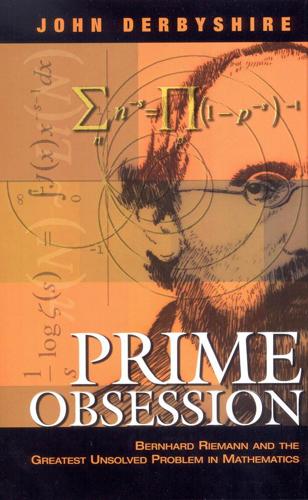
Prime Obsession:: Bernhard Riemann and the Greatest Unsolved Problem in Mathematics
by
John Derbyshire
Published 14 Apr 2003
All of it is important to the understanding of the Riemann Hypothesis, and I urge you to try out some of the main points, to check your understanding of them, before proceeding. A pocket calculator is good for this. You might, for example, find log 2 (which is 0.693147…) and log 3 (which is 1.098612…) and confirm that by adding them together you do indeed get log 6 (which is 1.791759…). Please notice, however, that because of the older use for base-10 logs that I mentioned, the “log” key on many pocket calculators delivers log to base 10. For the only log I care about, log to base e, such calculators generally provide an alternative key labeled “ln.”
…
Back to our main question: Is there some rule, some neat formula, that will give me π (N) without putting me to the trouble of counting? Allow me to perform a small trick on Table 3-1. I am going to divide the first column by the second, the arguments by the values. I’m not aiming for terrific precision. In fact, I shall use the $6 pocket calculator I take to the supermarket. Here goes. 1,000 divided by 168 gives 5.9524; 1,000,000 divided by 78,498 gives 12.7392. Four more similar calculations give me Table 3-2. THE PRIME NUMBER THEOREM 39 TABLE 3-2 N 1,000 1,000,000 1,000,000,000 1,000,000,000,000 1,000,000,000,000,000 1,000,000,000,000,000,000 N / π (N) 5.9524 12.7392 19.6665 26.5901 33.6247 40.4204 Look closely at the values here.
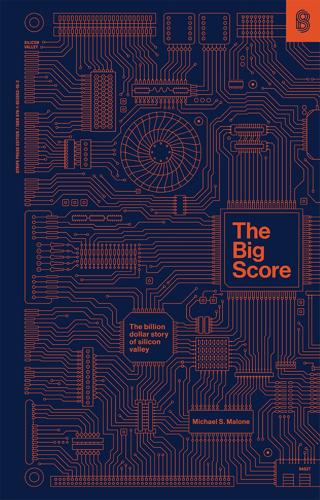
The Big Score
by
Michael S. Malone
Published 20 Jul 2021
The cycle of ebb and flood could not be ignored by the members of the Sunnyvale Historical Society. Few of these graying children of the city’s agrarian past had ever seen the inside of an electronics plant. But the technological revolution had not overlooked them. They wore the newest digital watches, they balanced their checkbooks on pocket calculators, a few had even bought shiny new personal computers. They had also seen the orchards bulldozed, watched as the value of their homes skyrocketed, been trapped in overheated rush-hour gridlock, and sadly stood by as Sunnyvale’s quaint old downtown was razed for a climatically controlled shopping mall.
…
Electronics giant Texas Instruments knew the score. Fresh from demolishing an entire sector of Silicon Valley in the low-end calculator wars of 1973–74, TI turned its guns on the high-end market and HP. TI’s strategy was simple. It built lower-quality imitations of the HP calculators and sold them at half the price. The impact upon HP’s pocket calculator division (caught in the midst of a move to Oregon) was devastating. The irony was that students and engineers and scientists still, in their heart of hearts, wanted HP calculators; they still wanted the best, they still wanted calculators that, as HP’s did, survived falling off the back of speeding motorcycles, being dropped into a bucket of molten lead, and being buried in snow for a winter—but they could afford the Texas Instruments calculators.
…
Waiting in the wings at the end of the decade was the business of building large computers to run on IBM software, the attack to be led by Amdahl Corp. (As you may have noticed, IBM has its hands over every corner of Valley life, to its victims seeming like some evil genius, a corporate Dr. Mabuse.) It was in the 1970s that the local systems business, particularly the consumer wing, really took off. It began with the pocket calculator in 1973, followed quickly by the digital watch. At the time it seemed as though everyone and his brother was making one or both of these procuts: computer companies (HP), chip houses (Intel, Fairchild, National Semiconductor), and new startups (Litronix). But within two years it was all but over, the price-bombing marketing policies driving out or destroying every competitor in the business, before itself succumbing to Japanese competition.

AIQ: How People and Machines Are Smarter Together
by
Nick Polson
and
James Scott
Published 14 May 2018
The first AI enabler is the decades-long exponential growth in the speed of computers, usually known as Moore’s law. It’s hard to convey intuitively just how fast computers have gotten. The cliché used to be that the Apollo astronauts landed on the moon with less computing power than a pocket calculator. But this no longer resonates, because … what’s a pocket calculator? So we’ll try a car analogy instead. In 1951, one of the fastest computers was the UNIVAC, which performed 2,000 calculations per second, while one of the fastest cars was the Alfa Romeo 6C, which traveled 110 miles per hour. Both cars and computers have improved since 1951—but if cars had improved at the same rate as computers, then a modern Alfa Romeo would travel at 8 million times the speed of light.
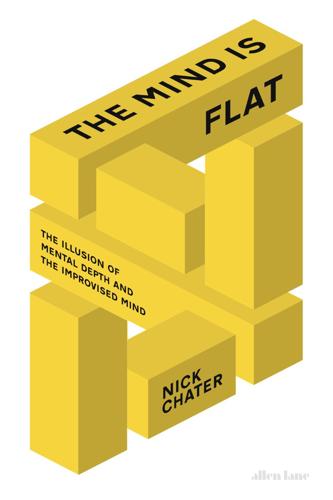
The Mind Is Flat: The Illusion of Mental Depth and the Improvised Mind
by
Nick Chater
Published 28 Mar 2018
As we have seen, we are only ever conscious of the results of our brain’s attempts to make sense of the world – or rather, to make sense of some small part of it. Yet these results arise from a hugely complex cooperative computation, the cycle of thought, involving a substantial fraction of those 100 billion neurons and drawing on vast amounts of information from our senses and our memories. Consciousness is, then, analogous to the ‘read-out’ of a pocket calculator, a search engine, or an ‘intelligent’ computer database. When we ‘feed in’ a sum (43 + 456), a search term (‘Fife fishing villages’), or a query (‘What is the capital of France?’), the ‘read-out’ gives us an answer, but it gives us absolutely no explanation or justification of where this answer came from.
…
They are, after all, hugely complex patterns of cooperative neural activity, searching for possible meanings in the current sensory input by reference to our capacious memories of past experience. But we are only ever conscious of particular interpretations of current sensory input. We could no more be conscious of our mental processes than a pocket calculator could ‘read out’ the design and operation of its own computer chip. Similarly, we could no more be conscious of the flow of cooperative neural activity by which we make sense of the world than we could be conscious of the biochemistry of the liver. We are conscious of, and could only ever be conscious of, the meanings, patterns and interpretations that are the output of this cooperative computation.
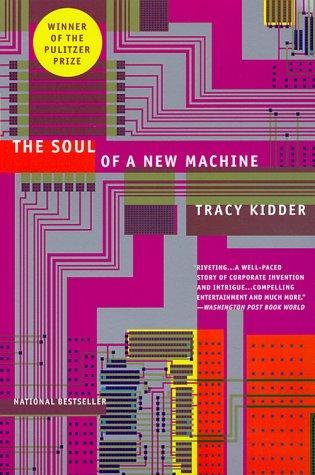
The Soul of a New Machine
by
Tracy Kidder
Published 1 Jan 1981
The second crucial stage in the development of the new electronics came when techniques were developed to hook many transistors together into complicated circuits — into little packets called integrated circuits, or chips (imagine the wiring diagram of an office building, inscribed on the nail of your little toe). The semiconductor industry, which is named for the class of solids out of which transistors are made, grew up around these devices and began producing chips in huge quantities. Chips made spaceships and pocket calculators possible. They became the basic building blocks of TVs, radios, stereos, watches, and they made computers ubiquitous and varied. They did not eliminate the sizable, expensive computer; they made it possible for the likes of IBM to produce machines of increased speed and capability and still make handsome profits without raising prices much.
…
What was wrong with West? Wasn't the worst behind them, now that they had finished the design? He didn't want to talk about it. He merely shook his head. Now, early in the new year, something like the computer existed, in the form of two partially assembled prototypes. But Eagle wasn't even the equivalent of a pocket calculator yet. The team now had to make that computer work. They called this part of the project "debugging." West had told Ed Rasala to draw up a debugging schedule that would bring Eagle to life by April, the date West had named for the bosses. West had gotten Manufacturing to send down some senior technicians from the factory in Portsmouth, New Hampshire, both to bolster the ranks of debuggers and to get Manufacturing involved.
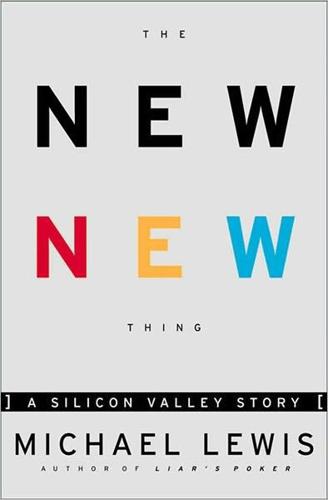
The New New Thing: A Silicon Valley Story
by
Michael Lewis
Published 29 Sep 1999
Obviously, "they" were the share prices for AOL and Netscape, which six weeks earlier AOL had agreed to purchase. You could hear the smile on Cliff's face. Cliff was a member of Clark World and, therefore, an owner of stock options in both Netscape and Healtheon. Clark reached a bit too casually behind his seat and found a pocket calculator. Cliff's news was the cherry on top of the ice cream sundae of his relief that the crossing was finally over. AOL had agreed to swap .45 of its own shares for each outstanding share of Netscape. Clark owned 14.2 million shares of Netscape. He punched .45 times 14.2 million into the calculator.
…
The Internet was perfectly suited to what he had in mind. The more Clark thought about it, the more he thought that the best money butler would use the Internet. The Internet would spare him Page 254 endless headaches: no more phone calls to banks or accountants, no more looking around for a pocket calculator to figure out how much he was worth, no more digging for receipts to find out how much he'd paid for the Picasso. Before he knew it, he had an idea for a business. He called his new company myCFO. His thinking ran something like this. There were a lot of people just like him who'd made millions of dollars and were now coping with the hassle of handling it.

The Latte Factor: Why You Don't Have to Be Rich to Live Rich
by
David Bach
and
John David Mann
Published 6 May 2019
“One thousand eight hundred and eighty-five, to be exact, with the interest included. Now, let’s see what happens to that when you let the power of compound interest take over.” He slipped a small calculator out of his jacket pocket and began tapping away at it as he jotted down numbers. Who still uses pocket calculators? thought Zoey, smiling to herself. Her barista was definitely old-school. He paused and looked up at Zoey. “Still saving five dollars a day, where do you think that would go after, say, forty years?” “I don’t know, maybe . . .” Zoey didn’t see how it could be much more than $50,000, but, just to be safe, she doubled that amount.
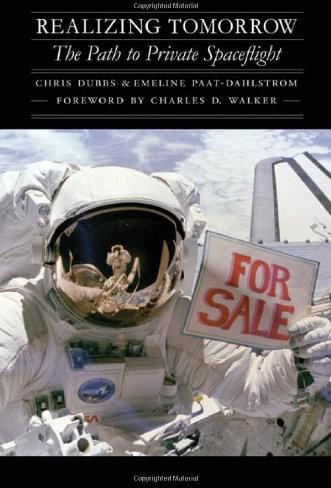
Realizing Tomorrow: The Path to Private Spaceflight
by
Chris Dubbs
,
Emeline Paat-dahlstrom
and
Charles D. Walker
Published 1 Jun 2011
If they didn't meet with more success, and quickly, the entire project might be canceled. This uncertainty hung over their heads for most of 1990. News stories reported claims by Saatchi & Saatchi that they were having trouble identifying exactly what would and what would not be possible with the Russians. If they sold sponsorship to a pocket calculator company, would the Russians allow a pocket calculator onboard? If a communications company wanted a sponsorship, would its equipment be compatible with Mir's signals? There was never a complete resolution of the benefits of sponsorship. As 199o progressed, it became clear that Saatchi & Saatchi would not be able to cover the costs of the mission with commercial sponsorships.

All Your Base Are Belong to Us: How Fifty Years of Video Games Conquered Pop Culture
by
Harold Goldberg
Published 5 Apr 2011
asked Arakawa with a gleam in his eye. “You can tell no one. We have the new game playing machine by Mr. Yokoi. It should be big.” Arakawa used the word “big” when other English words failed him. But he didn’t need a better descriptive. He had a prototype to show. Out came a plastic device that was about as large as a pocket calculator, but thicker. Rogers loved the look of the Game Boy. Arakawa continued, “Mr. Yokoi’s last product [the Game & Watch] was a big failure in the United States. But this Game Boy will be big, very big.” Rogers saw an opportunity to pitch Tetris. He fired various volleys about the game’s beauty, saying it would be one of the most significant games the industry had ever produced.
…
They watched movies like Apocalypse Now and The Long Good Friday with Bob Hoskins and Helen Mirren. They grooved to the music of the late seventies and early eighties. And they played games with zeal. Sam in particular enjoyed the Sinclair Spectrum, manufactured by Sir Clive Sinclair, a tough eccentric who also produced one of the first inexpensive pocket calculators in 1972. The Sinclair was a tiny, inexpensive computer with rubber keys that often broke, but man, when Sam loaded something like Jet Pac or Underwurlde, with their lurid colors and tough game play, he was transported elsewhere to the point of elation. Another game, Elite, would later serve as a template for the open world genre Rockstar would help to pioneer.* The kids at Sam’s school would have bags full of the inexpensive or pirated games to sell and trade.
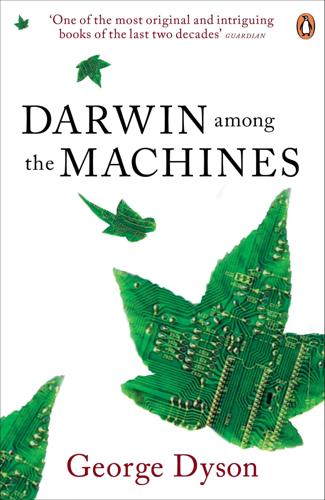
Darwin Among the Machines
by
George Dyson
Published 28 Mar 2012
Some fifteen hundred vacuum tubes, configured for parallel Boolean arithmetic, cycled through five thousand states per second, seeking to recognize a meaningful pattern in scrambled strings of code. The age of electronic digital computers was launched, secretively, as ten Colossi were brought on line by the time the war came to an end. It has been nothing but Turing machines, in one form or another, ever since. Ours is the age of computable numbers, from the pocket calculator to Mozart on compact disc to the $89.95 operating system containing eleven million lines of code. We inhabit a computational labyrinth infested by billions of Turing machines, each shuffling through millions of internal states per second and set loose, without coordinated instructions, to read and write mutually intelligible strings of symbols on a communally unbounded, self-referential, and infinitely convoluted supply of tape.
…
“He gave two reasons for this: when you sit in front of a screen your ability to think clearly declines because you’re distracted by irrelevancies, and when you store your data on magnetic media you can’t be sure they’re there permanently, you actually don’t know where they are at all.”34 Barricelli’s use of biological terminology to describe self-reproducing code fragments is reminiscent of early pronouncements about artificial intelligence, when machines that processed information with less intelligence than a pocket calculator were referred to as machines that think. A relic from the age of vacuum tubes and giant brains, Barricelli’s IAS experiments strike the modern reader as naïve—until you stop and reflect that numerical symbioorganisms have, in less than fifty years, proliferated explosively, deeply infiltrating the workings of life on earth.

The Everything Blueprint: The Microchip Design That Changed the World
by
James Ashton
Published 11 May 2023
In 1966, Curry joined Sinclair Radionics and over the next decade grew to become a vital aide to Clive Sinclair, a journalist turned inventor whose minimalist design and relentless work ethic meant he could usually make a splash in emerging electronics categories – so long as his advertising campaigns hit the mark. However, the firm’s digital wristwatch could not emulate the great success of an earlier pocket calculator, so the firm was part-nationalised by the government’s National Enterprise Board (NEB) in 1976 after losses mounted. When the involvement of the NEB became too much, Sinclair despatched Curry to set up another firm, Science of Cambridge, that he eventually intended to join. It had a mail-order hit selling a basic computer kit, the MK14 – so called because it had 14 components – comprising a simple circuit board with a small keypad and calculator display.
…
Individuals could use it ‘to drive through libraries, museums, databases, or institutional archives … converting vast quantities of information into personalized and understandable knowledge.’38 How the Navigator looked didn’t matter, Sculley added. ‘Indeed, within the next decade, the most powerful personal computer available today will be “invisible”; like a motor; it will fit into a machine the size of a pocket calculator.’ The Apple II chip ‘is already small enough to wear on an earring’, he observed. The idea for Knowledge Navigator fed into a keynote speech Sculley gave later that year, and an accompanying video showed a college professor conducting various tasks on a tablet-like device. Such ideas were already being pursued within Apple, and Sculley let them flourish.

What to Think About Machines That Think: Today's Leading Thinkers on the Age of Machine Intelligence
by
John Brockman
Published 5 Oct 2015
MACHINES AREN’T INTO RELATIONSHIPS N. J. ENFIELD Senior staff scientist, Max Planck Institute for Psycholinguistics, Nijmegen, the Netherlands; professor of linguistics, University of Sydney; author, The Utility of Meaning When we think of machines that think, we usually think of thinking in the pocket-calculator sense of the word. Input, crunch, output, bam! There’s your answer. We love these machines and we need them, because they think in ways we can’t: consistent, exhaustive, and fast. But the reverse is also true. We think in ways they can’t. The machines aren’t concerned with your state of mind.
…
Our brains are, after all, fantastic machines. THINKING MACHINES = OLD ALGORITHMS ON FASTER COMPUTERS BART KOSKO Professor of electrical engineering, professor of engineering and law, University of Southern California; author, Noise Machines don’t think. They approximate functions. They turn inputs into outputs. A pocket calculator’s square-root button turns the number 9 into the number 3. A well-trained convolutional neural network turns an image with your face in it into the output 1. It turns an image without your face in it into the output 0. A multilayered or “deep” enough neural net maps any image to the probability that your face is in that image.

These Strange New Minds: How AI Learned to Talk and What It Means
by
Christopher Summerfield
Published 11 Mar 2025
Before diving into this debate, let’s first clarify what we mean by the term ‘mind’. Scientists and engineers often shy away from talking about the mind, and about mental states in general. It’s much safer to talk about ‘the brain’, a comfortingly physical computing device powered by electricity, like a digital watch or a pocket calculator. You can hold a human brain in your hands – for an adult, it weighs about 1.3 kilos. But the mind is much more elusive. The renowned philosopher of mind Daniel Dennett (who put up with the term in his job title) once complained, ‘Talking about the mind, for many people, is rather like talking about sex: slightly embarrassing, undignified, maybe even disreputable.’[*2] When philosophers like Dennett refer to the mind, they are often concerned with the subjective content of mental states, such as what it is like to have an itchy nose, or to glimpse the shimmer of a mirage in the desert.
…
If so, then we could imagine that in the future when we set them really hard problems – those that could never be solved by approximation – they will be definitively stumped. You won’t find a cure for cancer or crack the secret of cold fusion via a series of wild guesses. And it is true that even in the case of simple arithmetic, unlike your pocket calculator, LLMs get worse when the problem becomes more involved. For example, one paper showed that whilst GPT-4 can easily find the product of two 3-digit integers, it occasionally makes mistakes when multiplying pairs of numbers that are greater than ten thousand.[*3] All in all, this sounds like a compelling argument.

The End of Work: Why Your Passion Can Become Your Job
by
John Tamny
Published 6 May 2018
These space-age gadgets weighed 1.5 pounds and cost three thousand dollars.12 Thanks to the venture buyers of the nineties, GPS systems are now standard on the iPhone and Android, and free apps like Waze not only get you from point A to point B but also guide you around the traffic jams. In 1970, Texas Instruments released the first pocket calculator, and those at the front of the line paid four hundred dollars for the miraculous gizmo.13 Today you can access a calculator for free by entering “calculator” in the Google search bar. A few years earlier, IBM had introduced its first mainframe computers. The price of the simplest version was more than a million dollars.14 Today, exponentially more powerful computers can be had for less than two hundred dollars.
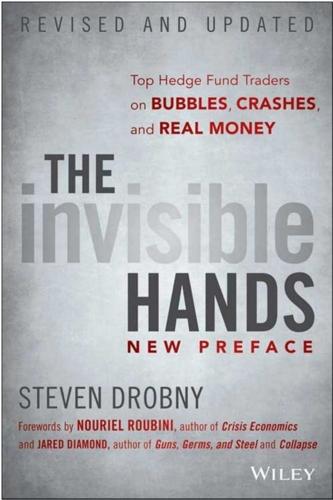
The Invisible Hands: Top Hedge Fund Traders on Bubbles, Crashes, and Real Money
by
Steven Drobny
Published 18 Mar 2010
Likewise, they observed other peasants with overspread holdings who never starved but also never glutted, while still others discovered a happy medium of strip numbers that permitted frequent modest gluts and never any starvation. Should you suspect that the peasants really did use a pocket calculator and a friendly visiting mathematical modeler, birds such as sparrows, which certainly don’t have pocket calculators, also make similar risk-sensitive decisions such that they are never starving. Steven Drobny’s latest book is about the Peruvian peasants of the hedge-fund world: that minority of managers who made money or at least preserved capital during the Annus horribilis of 2008, while greedier managers who had accumulated major gluts and perhaps even achieved higher long-term time-averaged returns in previous happy years lost disastrously or went bankrupt.
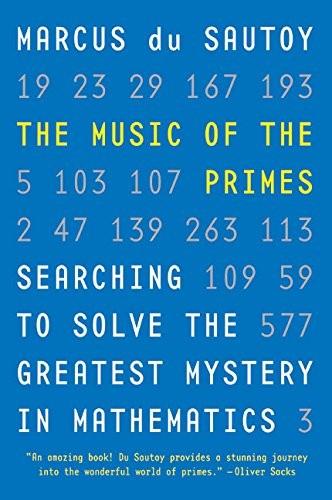
The Music of the Primes
by
Marcus Du Sautoy
Published 26 Apr 2004
Gauss’s guess If centuries of searching had failed to unearth some magic formula which would generate the list of prime numbers, perhaps it was time to adopt a different strategy. This was what the fifteen-year-old Gauss was thinking in 1792. He had been given a book of logarithms as a present the previous year. Until a few decades ago, tables of logarithms were familiar to every teenager doing calculations in the schoolroom. With the advent of pocket calculators, they lost their place as an essential tool in everyday life, but several hundred years ago every navigator, banker and merchant would have been exploiting these tables to turn difficult multiplication into simple addition. Included at the back of Gauss’s new book was a table of prime numbers.
…
Stimulated by a curious question raised in the article, Erdos descended on Pomerance in Georgia to begin a collaboration that would produce over twenty joint papers. Factorising numbers had fascinated Pomerance ever since he had been asked to factorise the number 8,051 in a high-school mathematics competition. There was a time limit of five minutes, and in the 1960s pocket calculators didn’t exist. Although Pomerance was excellent at mental arithmetic, he decided first to look for a quick route to the solution rather than just testing one number after another. ‘I spent a couple of minutes looking for the clever way, but grew worried that I was wasting too much time. I then belatedly started trial division, but I had wasted too much time, and I missed the problem.’

Fire in the Valley: The Birth and Death of the Personal Computer
by
Michael Swaine
and
Paul Freiberger
Published 19 Oct 2014
The mainframe companies apparently thought that no market existed for low-cost personal computers, and even if there were such a market, they figured it was the minicomputer companies who would exploit it. They were wrong. Take Hewlett-Packard, a company that grew up in Silicon Valley and was producing everything from mainframe computers to pocket calculators. Senior engineers at HP studied and eventually spurned a design offered by one of their employees, an engineer without a degree named Stephen Wozniak. In rejecting his design, the HP engineers acknowledged that Wozniak’s computer worked and could be built cheaply, but they told him it was not a product for HP.
…
But Commodore, with its strong distribution channels for its electronics equipment and its own semiconductor design capabilities, was perceived as the greatest threat. Commodore International was a Canadian electronics-products firm founded and run by Jack Tramiel, an Auschwitz survivor and a hard-driving businessman. In the early 1970s it had been heavily focused on selling pocket calculators using TI chips. When TI jumped into the industry itself, Commodore went from $60 million in annual sales to a $5 million loss. Tramiel’s reaction was to move the company to Palo Alto, purchase chip company MOS Technology, and hire its lead designer, Chuck Peddle. Peddle had shaken up the market with his 6502 microprocessor, a chip that could sell for $25, about a sixth the going price for such chips.

Jennifer Morgue
by
Stross, Charles
Published 12 Jan 2006
I spend the rest of the day wandering from desk to desk, filing requisitions and ordering up supplies, with Pete snuffling and shambling after me like a supersized spaniel. The cleaners won't be able to work over Johnson's office until next Tuesday due to an unfortunate planetary conjunction, but I know a temporary fix I can sketch on the floor and plug into a repurposed pocket calculator that should hold "Slug" Johnson at bay until we can get him exorcised. Meanwhile, thanks to a piece of freakish luck, I discover a stash of elderly laptops nobody is using; someone in Catering mistyped their code in their Assets database last year, and thanks to the wonders of our ongoing ISO 9000 certification process, there is no legal procedure for reclassifying them as capital assets without triggering a visit by the Auditors.
…
The executives of WorldCom and Enron were denizens of a corporate culture so rapacious that any activity, however dubious, could be justified in the name of enhancing the bottom line. They have rightfully been charged, tried, and in some cases jailed for fraud, on a scale that would have been the envy of Mabuse, Blofeld, or their modern successor, Dr. Evil. When you need extra digits on your pocket calculator to compute the sums you are stealing, you're in the big league. Again, when you're able to evade prosecution by the simple expedient of appointing the state prosecutor and the judges — because you're the president of a country (and not just any country, but a member of the rich and powerful G8) — you're certainly not amenable to diagnosis and detection in the same sense as your run-of-the-mill shoplifter or petty delinquent.
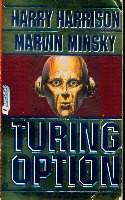
The Turing Option
by
Harry Harrison
and
Marvin Minsky
Published 2 Jan 1992
Plenty of jealousy too, since he did the work so much better and faster than they did. How had people who really knew how to think, like Turing or Einstein or Feynman, how had they managed to live through school? He looked at his screen and tried not to groan as the girl made a hash of it. It was too awful to watch. He casually pushed his pocket calculator against the side of his terminal and punched in a quick code. A list of Italian verbs appeared in a window on the screen and he scrolled through them, memorizing the new ones. Brian had discovered, very early on, that the school tapped into every student's computer and recorded all the data that was entered into it.
…
But now narrow-band infrared links, like ethernet systems, filled the room with invisible communication. Every computer had a digitally tunable LED, a light-emitting diode, that transmitted on low-noise channels. A photodetector picked up messages it was tuned to. Brian's solution to this was to build an intercepting device into what appeared to be a pocket calculator. When it was placed at the side of his computer it intercepted the incoming signal and rebroadcast it. So he could do whatever he wished without anyone being able to detect the operation. What was on the screen was for his eyes alone! Allattare to feed or to nurse... allenare to exercise, to train.
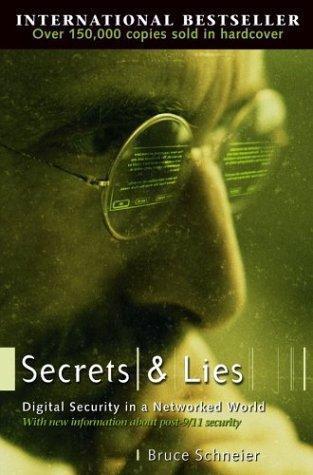
Secrets and Lies: Digital Security in a Networked World
by
Bruce Schneier
Published 1 Jan 2000
Two different technologies deal with this situation. The first is challenge/reply. The token is a pocket calculator, with a numeric keypad and small screen. When the user wants to log in, the remote host presents him with a challenge. He types that challenge into his token. The token calculates the appropriate reply, which he types into the computer and sends to the host. The host does the same calculation; if they match, he is authenticated. The second technology is time-based. This token is the same pocket calculator, with just a screen. The numbers on the screen change regularly, generally once per minute.

The Internet Is Not What You Think It Is: A History, a Philosophy, a Warning
by
Justin E. H. Smith
Published 22 Mar 2022
And this is precisely our predicament when we attempt to comprehend computers, networked and otherwise, in their relationship to other things: to living nature, to human minds, or to looms. Threads The Analytical Engine was not, and was never conceived to be, a networked device. It is thus principally an ancestor of what would in the twentieth century become the pocket calculator or the word processor, and not of what would become the internet. Babbage’s and Lovelace’s engines were meant to sit in one place and to process the information fed into them in that same place, not to absorb information from far and wide. A mostly separate ancestral lineage of the internet would witness the successive development of systems and devices that were not meant to process information, but only to transmit signals: the lunar listening disc, the electric telegraph, the snail telegraph, the recording sponge, the optical semaphore, all of which we have considered in previous chapters (and some of which have no existence beyond the human imagination).

The Interior Design Handbook
by
Frida Ramstedt
Published 27 Oct 2020
The twelfth-century Italian mathematician Fibonacci and ancient Greek philosopher Pythagoras are often said to be the first people to define the golden ratio, and it’s had a long and checkered history since. Irrespective of what you may know or think of it as an ideal, there can be no doubt that it has informed our view of beauty throughout the ages. You don’t need to reach for a pocket calculator in order to use the golden ratio in your design, since the theory of the golden ratio and divine proportions includes certain geometrical shapes, such as the golden rectangle, the golden spiral, and the golden triangle. This is where this approach really comes into its own for those of us who are not keen on numbers.
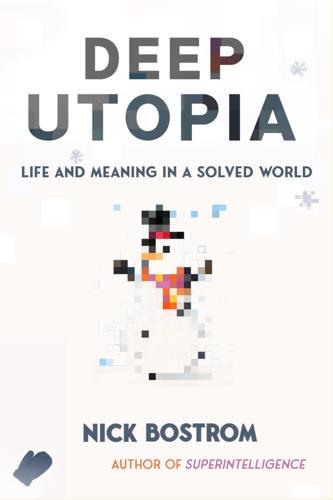
Deep Utopia: Life and Meaning in a Solved World
by
Nick Bostrom
Published 26 Mar 2024
So in a movie of a simple arithmetic computation, one frame might depict “2+2”, and the next frame might depict “4”. But if you edited the first frame to “2+3”, the second frame would still depict “4”. This is in contrast to if you are actually implementing the computation. If instead of a movie reel, you were using a pocket calculator, which does implement the computation, then in the time step after you had edited the input, the screen would depict a “5”. Firafix: I see. So how does this connect to what happens when we are reading a novel? Kelvin: When we’re reading about or imagining one of the characters in a novel, are we representing all their counterfactual behaviors to a sufficient degree?
…
Perhaps at technological maturity, all productive activities will have been optimized and decomposed into subtasks that do not require more than insect-level intelligence to carry out? Then the problem is not that humans are not capable enough, but that we are too capable, and therefore inefficient. It would (if nothing else) be energetically wasteful to employ a human mind to perform a task for which a simple processor, like the chip in an old-fashioned pocket calculator, would suffice. Well, this is conceivable. However, I think it is likely that there will continue to be at least some practical need for higher levels of cognition for billions of years to come. I have put some examples of tasks in one of the handouts, which you can peruse later. HANDOUT 18 SOME HIGH-LEVEL TASKS AT TECHNOLOGICAL MATURITY The following examples of “high-level work” are task-domains which, even at technological maturity, plausibly cannot be routinized or automated by cognitive systems significantly less sophisticated, creative, or generally capable than human minds.
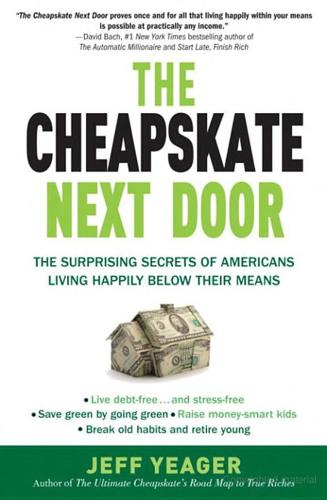
The Cheapskate Next Door: The Surprising Secrets of Americans Living Happily Below Their Means
by
Jeff Yeager
Published 8 Jun 2010
With that kind of savings, you get a lot more cluck-for-the-buck if you cut up your own bird. Don’t leave home without it: Even once you’ve conditioned yourself to always check the price per unit and put together your shopping-cart cheat sheet, remember that real cheapskates are always armed with a pocket calculator when they go grocery shopping. Particularly if you’re using coupons, buying store sale items, or trying to stay within a set budget, doing the math in your head can be difficult, even for a guy like Rob “Rain Man” Crabtree. “Eat more soup”: One of the touchstone questions I like to ask cheapskates is, “If the economy totally falls apart or you have a personal financial emergency, what would you do?”
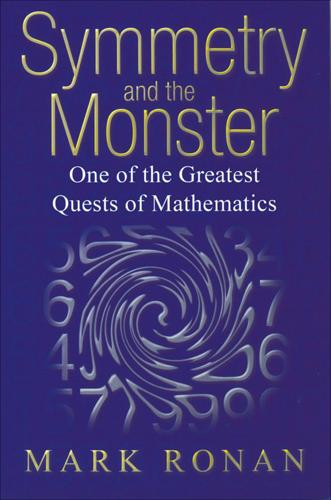
Symmetry and the Monster
by
Ronan, Mark
Published 14 Sep 2006
The fourth number is the number of mirrors at 60° to the one you fixed, and the fifth is the number at 45°. Fischer calculated each of these numbers as the size of one symmetry group divided by the size of another, and that yielded each number as a product of prime numbers, which had to be multiplied together before doing the addition. This was back in the early 1970s when there were no pocket calculators. People who had to do lots of additions and multiplications – people in accountancy firms, for example – would call in a comptometer operator, someone who sat down at a rather unwieldy machine and banged in the numbers at a great rate of knots. Fischer was doing the work that led to these numbers in 1973 and was frequently in England, visiting the Universities of Warwick and Birmingham.

The Vanishing Face of Gaia: A Final Warning
by
James E. Lovelock
Published 1 Jan 2009
Engineers are practical people and I doubt if any of their models, no matter how real they appeared, went into mass production without the trial and test of a solid prototype. Other scientists began to compose models and use them to refine their ideas and experiments. In the 1960s and 1970s computers were hardly more powerful than a pocket calculator, and their program languages were peculiar. One such form of mathematical logic rejoiced in the name ‘reverse polish’, and not surprisingly non‐mathematical scientists avoided it. By the 1980s fairly powerful computers were mass produced and easy to use. Just as the average driver has no idea of the working of a modern car, so scientists using the computer on their desk have no idea of its detailed working but confidently drive it to solve their problems.
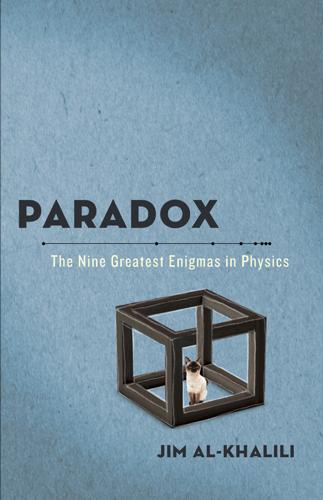
Paradox: The Nine Greatest Enigmas in Physics
by
Jim Al-Khalili
Published 22 Oct 2012
It may sound odd, but it is perfectly consistent with the predictions of Einstein’s theory. The times I have chosen are arbitrary and depend on just how fast the spacecraft has been traveling. Had Alice, for instance, nudged even closer to the speed of light, then quite straightforward mathematics for anyone with a pocket calculator would show that one year on the rocket could correspond to a million years on Earth or, equivalently, during a day’s travel by Alice’s reckoning thousands of years would go by on Earth. But let us stick to the spacecraft speed that leads to the one-year/ten-years mismatch to at least allow Alice to return while her brother is still alive.

Shampoo Planet
by
Douglas Coupland
Published 28 Dec 2010
Once, last spring, I secretly followed Anna-Louise when she was strolling downtown, trying to see her as might a stranger, her young legs so tender under her little plaid skirt and the weather so fine, when, under the clear blue sky, she held out her hand as though she had just felt a drop of rain. Imagine. I imagine I sow cuttings of Anna-Louise's hair, like the fine stems of dried flowers, and watch sunflowers grow from the cuttings. / imagine I bury a pocket calculator with liquid crystals spelling her name, then watch the earth shoot forth lightning bolts. "We should open up a seafood house together," Anna-Louise says when she wants to torture me. Now that's love. School's out and Anna-Louise is melting into the black seat of my Nissan, aka: the Comfortmobile, and fidgeting with a queen of spades playing card on a shoestring necklace, a bauble I made for her last Saturday.
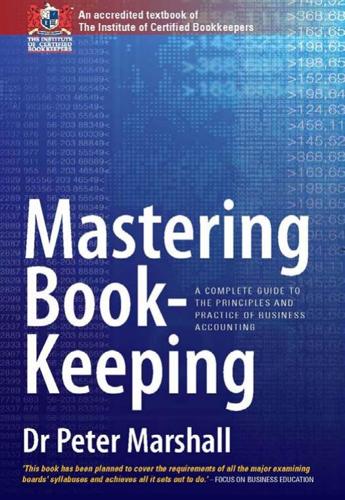
Mastering Book-Keeping: A Complete Guide to the Principles and Practice of Business Accounting
by
Peter Marshall
Published 1 Feb 1997
As mentioned earlier this is exactly the same thing as multiplying the net amount by the VAT rate/100 because dividing anything by 100 simply moves the decimal point two places to the left. This technique just cuts out the first stage of the calculation. It’s easier to remember, it takes less time and uses up less paper. Many pocket calculators have a percentage key and providing they use ‘as you say it’ logic it takes the same number of steps to calculate the VAT figure: 6 VAT rate % = It’s just as quick and simple to multiply by the VAT rate expressed as a decimal, although you may wish to use the calculator for this simple multiplication, depending on how arithmetically skilled you are: 6 .
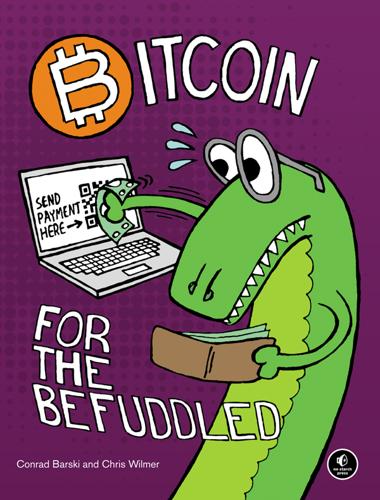
Bitcoin for the Befuddled
by
Conrad Barski
Published 13 Nov 2014
→ Prime factors (2,7,7,13) (hard) Another one-way function, which is a bit more complicated but is commonly used in cryptography, involves the discrete logarithm. Consider a set of integers {0, 1, 2, 3, ..., n − 1} where n is a prime number and where we only use modular arithmetic with modulo n:3 Example: n = 7 3 + 6 (mod 7) = 2 3 x 6 (mod 7) = 4 It is easy (as in, you can do it with a pocket calculator) to raise an integer, a, to the kth power to calculate the integer b: Example: a^k (mod n) = b 3^2 (mod 5) = 4 However, the discrete logarithm, which is finding k given only a, b, and n, is difficult to calculate. The only known methods to find k are variations on trying to guess every value between 0 and n that satisfy the preceding equation.

Tyler Cowen-Discover Your Inner Economist Use Incentives to Fall in Love, Survive Your Next Meeting, and Motivate Your Dentist-Plume (2008)
by
Unknown
Published 20 Sep 2008
It is not easy to strike the right balance between caring and calculation. When "showing that you care" is done only to get ahead or impress others, people will notice and conclude that one does not care much at all. So we should not apply economic logic to every possible caring or signaling decision. Do not pull out the pocket calculator. Obsessive calculation breaks down trust and challenges the glue that holds families, cultures, and even states together when catastrophe strikes. Do not try to figure out if we should help a city struck by a hurricane. Do not estimate daily the costs and benefits of marital fidelity. These are decisions lying behind us.

But What if We're Wrong? Thinking About the Present as if It Were the Past
by
Chuck Klosterman
Published 6 Jun 2016
If we base any line of reasoning around consistent numeric values, there is no way to be wrong, unless we are (somehow) wrong about the very nature of the numbers themselves. And that possibility is a non-math conversation. I mean, can 6 literally turn out to be 9? Jimi Hendrix imagined such a scenario, but only because he was an electric philosopher (as opposed to a pocket calculator). “In physics, when we say we know something, it’s very simple,” Tyson reiterates. “Can we predict the outcome? If we can predict the outcome, we’re good to go, and we’re on to the next problem. There are philosophers who care about the understanding of why that was the outcome. Isaac Newton [essentially] said, ‘I have an equation that says why the moon is in orbit.
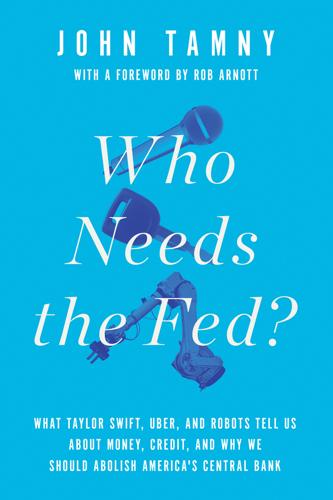
Who Needs the Fed?: What Taylor Swift, Uber, and Robots Tell Us About Money, Credit, and Why We Should Abolish America's Central Bank
by
John Tamny
Published 30 Apr 2016
CHAPTER EIGHTEEN The Fed Has a Theory, and It Is 100 Percent Bogus It is simply absurd to argue that increasing unemployment will stop inflation. —Robert Mundell IN 1970, Dallas-based technology company Texas Instruments brought to market the first pocket electronic calculator. While it’s hard to imagine today, the adding and subtracting machine retailed for $400.1 At present, Amazon retails all manner of pocket calculators, generally in the $3 to $5 price range per instrument. A packet of six on the site goes for $23.99. Calculators come as part of the package with Microsoft Windows and other software programs. Here lies the beauty of economic progress, specifically economic growth. Individuals grow rich in a capitalist society by virtue of turning obscure and expensive luxuries solely enjoyed by the rich—from the car to the computer to the cell phone—into inexpensive goods for all income classes to enjoy.
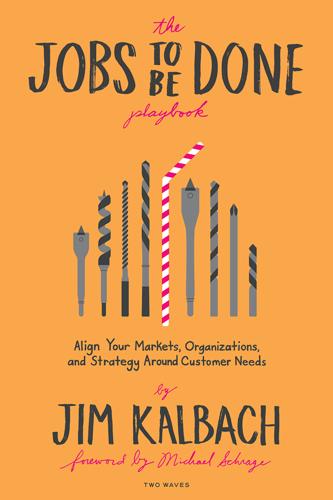
The Jobs to Be Done Playbook: Align Your Markets, Organization, and Strategy Around Customer Needs
by
Jim Kalbach
Published 6 Apr 2020
Consequently, JTBD research typically has a long shelf life. It is foundational insight that can be applied across projects and departments over time. For instance, 75 years ago when people prepared their taxes, they used pen and paper for all calculations and submissions. Later, they used pocket calculators to help with the numbers and sums. These days, completing taxes is done with sophisticated software and online filing solutions that didn’t exist 50 years ago. Though technology changed, the job remains the same: file taxes. 3. People seek services that enable them to get more of their job done quicker and easier.
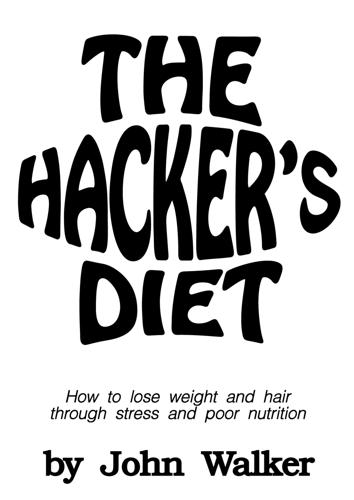
The Hacker's Diet
by
John Walker
April 1989 Date Day Weight Trend Rung _____ 4/1/89 Saturday 145.5 _____ 25 4/2/89 Sunday 145.5 _____ 25 4/3/89 Monday 145.0 _____ 25 4/4/89 Tuesday 146.5 _____ 26 4/5/89 Wednesday 146.5 _____ 26 4/6/89 Thursday 145.0 _____ 26 4/7/89 Friday 146.0 _____ 26 4/8/89 Saturday 144.0 _____ 26 4/9/89 Sunday 145.5 _____ 26 4/10/89 Monday Travel _____ ____ 4/11/89 Tuesday Travel _____ ____ 4/12/89 Wednesday 145.5 _____ 25 4/13/89 Thursday 146.5 _____ 25 4/14/89 Friday 145.0 _____ 25 4/15/89 Saturday 140.5 _____ 26 4/16/89 Sunday _____ _____ ____ 4/17/89 Monday _____ _____ ____ 4/18/89 Tuesday _____ _____ ____ 4/19/89 Wednesday _____ _____ ____ 4/20/89 Thursday _____ _____ ____ 4/21/89 Friday _____ _____ ____ 4/22/89 Saturday _____ _____ ____ 4/23/89 Sunday _____ _____ ____ 4/24/89 Monday _____ _____ ____ 4/25/89 Tuesday _____ _____ ____ 4/26/89 Wednesday _____ _____ ____ 4/27/89 Thursday _____ _____ ____ 4/28/89 Friday _____ _____ ____ 4/29/89 Saturday _____ _____ ____ 4/30/89 Sunday _____ _____ ____ If you aren't using Excel, calculate the daily trend figure and enter it in the “Trend” column. You could calculate all the trend numbers at the end of the month, but it's better to spend a few seconds every day rather than look upon it as a page full of calculations to do each month. If you keep a cheap pocket calculator next to your logbook, you can calculate the trend in less time than it takes to write the number in the book. Log exercise rung If you're following the optional exercise program, record the level of exercise in the “Rung” column, right after you complete the exercises for the day. If you skip a day, or aren't participating in the exercise regime, leave the “Rung” entry blank.
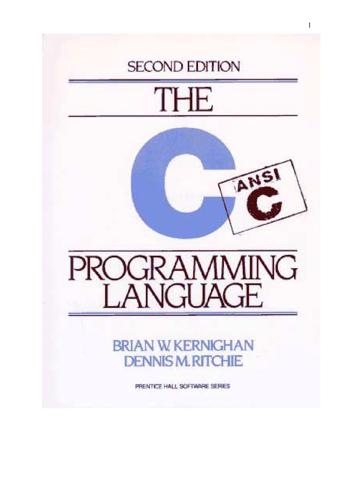
The C Programming Language
by
Brian W. Kernighan
and
Dennis M. Ritchie
Published 15 Feb 1988
Thus if two functions must share some data, yet neither calls the other, it is often most convenient if the shared data is kept in external variables rather than being passed in and out via arguments. Let us examine this issue with a larger example. The problem is to write a calculator program that provides the operators +, -, * and /. Because it is easier to implement, the calculator will use reverse Polish notation instead of infix. (Reverse Polish notation is used by some pocket calculators, and in languages like Forth and Postscript.) In reverse Polish notation, each operator follows its operands; an infix expression like 68 (1 - 2) * (4 + 5) is entered as 1 2 - 4 5 + * Parentheses are not needed; the notation is unambiguous as long as we know how many operands each operator expects.
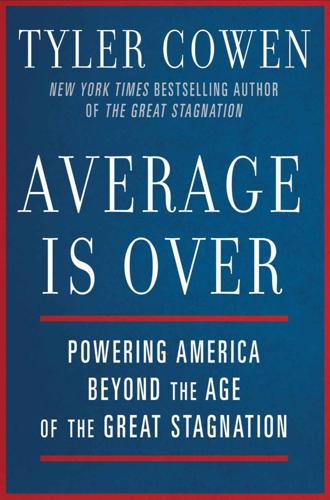
Average Is Over: Powering America Beyond the Age of the Great Stagnation
by
Tyler Cowen
Published 11 Sep 2013
Which other parts of our brains will we outsource to intelligent machines? And how will we change as a result? It’s already clear that the genius machines do very well at brute calculation, so the obvious prediction is that we will, as humans, become less interested in pure calculation and less able to calculate. That’s already happened. The pocket calculator has weakened our ability to perform seamless long division with pencil and paper, but we spend our time honing other skills instead. Two different effects are operating here, but we can tease them apart for a look at where humanity is headed. On one hand, many successful individuals will learn how to think like smart machines, or at least enough to understand their operation, in order to become wealthy, high-status earners.

Toast
by
Stross, Charles
Published 1 Jan 2002
Jumping into the saddle of my time machine I slide the crystal rod backwards, setting the controls for 1901. On arrival, I proceed at once to—where else?—the residence of one Mr Herbert George Wells, writer and journalist. I knock on the door and, sidestepping the housekeeper, introduce myself as a Time traveller from 2001, validating my credentials with a solar-powered pocket calculator and a digital watch. Mr Wells is fascinated; he quite naturally asks me questions about my era. Unfortunately I am constrained by the law of temporal paradox evasion (not to mention the time police, and the exigencies of essay writing), so when he asks a question I can only say, “yes,” “no,” or state a known quantitative fact: (Fade out, pursued by a bloodthirsty temporal paradox.)
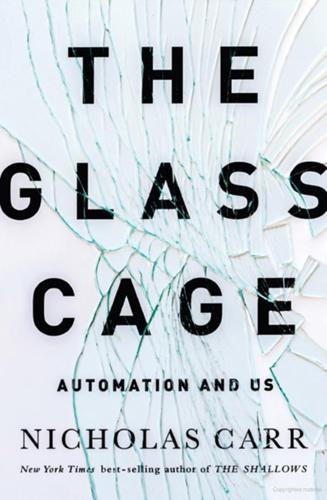
The Glass Cage: Automation and Us
by
Nicholas Carr
Published 28 Sep 2014
Our unconscious mind can perform a lot of functions quickly and efficiently, but it can’t do everything. You might be able to memorize the times table up to twelve or even twenty, but you would probably have trouble memorizing it much beyond that. Even if your brain didn’t run out of memory, it would probably run out of patience. With a simple pocket calculator, though, you can automate even very complicated mathematical procedures, ones that would tax your unaided brain, and free up your conscious mind to consider what all that math adds up to. But that only works if you’ve already mastered basic arithmetic through study and practice. If you use the calculator to bypass learning, to carry out procedures that you haven’t learned and don’t understand, the tool will not open up new horizons.
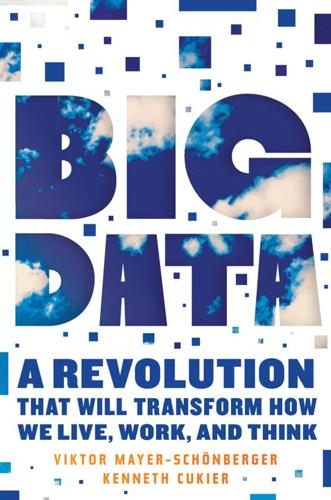
Big Data: A Revolution That Will Transform How We Live, Work, and Think
by
Viktor Mayer-Schonberger
and
Kenneth Cukier
Published 5 Mar 2013
The other three-quarters were on paper, film, vinyl LP records, magnetic cassette tapes, and the like. The mass of digital information then was not much—a humbling thought for those who have been surfing the Web and buying books online for a long time. (In fact, in 1986 around 40 percent of the world’s general-purpose computing power took the form of pocket calculators, which represented more processing power than all personal computers at the time.) But because digital data expands so quickly—doubling a little more than every three years, according to Hilbert—the situation quickly inverted itself. Analog information, in contrast, hardly grows at all. So in 2013 the amount of stored information in the world is estimated to be around 1,200 exabytes, of which less than 2 percent is non-digital.
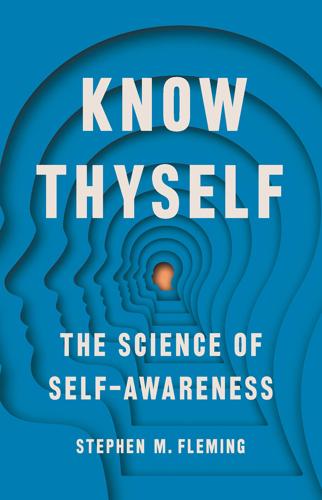
Know Thyself
by
Stephen M Fleming
Published 27 Apr 2021
As we have seen, good ability does not necessarily lead to good metacognition. You might be performing expertly at a task (recall the chick sexers) and yet have no self-awareness of what you are doing. Instead, this kind of AI is likely to become more and more intelligent in particular domains, while perhaps remaining no more self-aware than a pocket calculator. We can make this discussion more precise by considering what building blocks machines would need to become self-aware. Many of these components are things we have already encountered in Part I, such as the ability to track uncertainty and self-monitor actions. Machines often do not have these second-order capabilities—partly because, in most cases in which the problem is clearly specified, they do not need to.
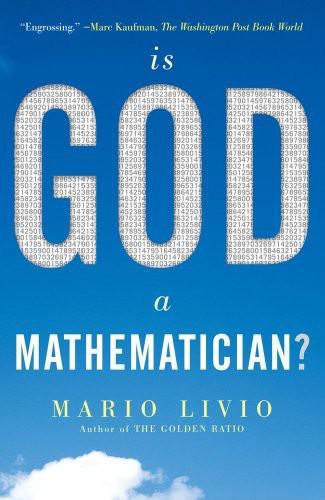
Is God a Mathematician?
by
Mario Livio
Published 6 Jan 2009
They put the mathematical symmetry principles first, insisting that the laws of nature and indeed the basic building blocks of matter should follow certain patterns, and they deduced the general laws from these requirements. How does nature know to obey these abstract mathematical symmetries? In 1975, Mitch Feigenbaum, then a young mathematical physicist at Los Alamos National Laboratory, was playing with his HP-65 pocket calculator. He was examining the behavior of a simple equation. He noticed that a sequence of numbers that appeared in the calculations was getting closer and closer to a particular number: 4.669…To his amazement, when he examined other equations, the same curious number appeared again. Feigenbaum soon concluded that his discovery represented something universal, which somehow marked the transition from order to chaos, even though he had no explanation for it.
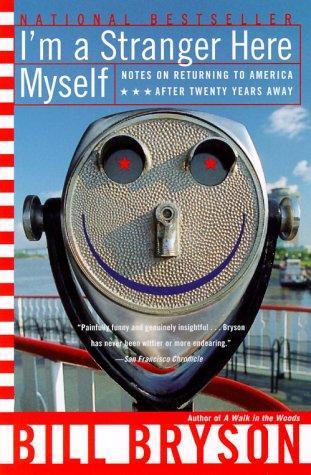
I'm a stranger here myself: notes on returning to America after twenty years away
by
Bill Bryson
Published 6 Jun 2000
Now think about this for a moment and tell me any circumstance—and I mean any circumstance at all—in which you can envision wanting to set a video machine to record a program one year from now. I don’t want to sound like some old guy who is always moaning. I freely acknowledge that there are many excellent, well-engineered products that didn’t exist when I was a boy— the pocket calculator and Post-it notes are two that fill me yet with gratitude and wonder—but it does seem to me that an awful lot of things out there have been designed by people who cannot possibly have stopped to think how they will be used. Just think for a moment of all the everyday items you have to puzzle over—fax machines, scanners, photocopiers, hotel showers, hotel alarm clocks, airline tickets, television remote control units, microwave ovens, almost any electrical product owned by someone other than you—because they are ill thought out.
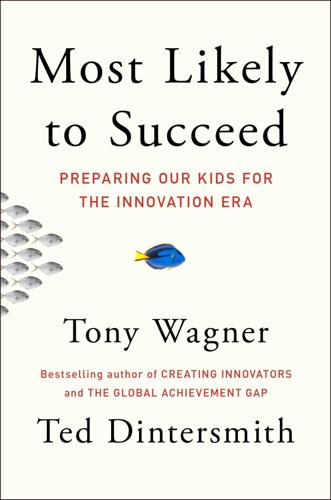
Most Likely to Succeed: Preparing Our Kids for the Innovation Era
by
Tony Wagner
and
Ted Dintersmith
Published 17 Aug 2015
A 2013 study by the National Center on Education and the Economy found that “the mathematics that most enables students to be successful in college courses is not high school mathematics, but middle school mathematics, especially arithmetic, ratio, proportion, expressions and simple equations.”5 With the 1950s advent of the electronic computer, the world of computation changed. Computers could instantly perform low-level tasks better than a person could ever do by hand. Initially confined to windowless rooms in basements, computation soon found its way to our pockets. In 1972, Hewlett-Packard capitalized on the semiconductor to develop the HP-35 pocket calculator, a vast improvement over the slide rule. These calculators sold like hotcakes, despite their price ($395 in 1972, corresponding to $2,250 today), and within just a few years, slide rules were destined for science museums. But electronics didn’t stop there—personal computers became widely available in the 1980s.

Here Comes Everybody: The Power of Organizing Without Organizations
by
Clay Shirky
Published 28 Feb 2008
They overestimate mere fads, seeing revolution everywhere, and they make this kind of error a thousand times before they learn better. In times of revolution, though, the experienced among us make the opposite mistake. When a real, once-in-a-lifetime change comes along, we are at risk of regarding it as a fad, as with the grown-ups arguing over the pocket calculator in my local paper. What they should have been arguing about instead was how to prepare students to take advantage of the new tools, but they got distracted by assuming that because calculators were new additions to society, they were also provisional ones, when in fact they were new but permanent.
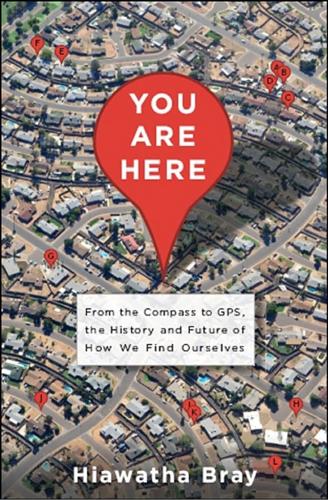
You Are Here: From the Compass to GPS, the History and Future of How We Find Ourselves
by
Hiawatha Bray
Published 31 Mar 2014
A spy satellite would weigh far more. The Americans needed bigger rocket boosters capable of hoisting such a payload. They needed cameras and film suited to the rigors of spaceflight. They had to design a reentry capsule that could bring the exposed film safely to earth. They had to do it all without pocket calculators or personal computers, but with pencils, paper, and slide rules. And they had to do it fast. In February 1959 Discoverer 1 was launched from Vandenberg Air Force Base in California. It became the first spacecraft to be placed in a polar orbit, circling the earth from north to south. That is the ideal orbit for a recon satellite, because as the earth rotates beneath the satellite, it passes over a different region of the planet on each orbit.
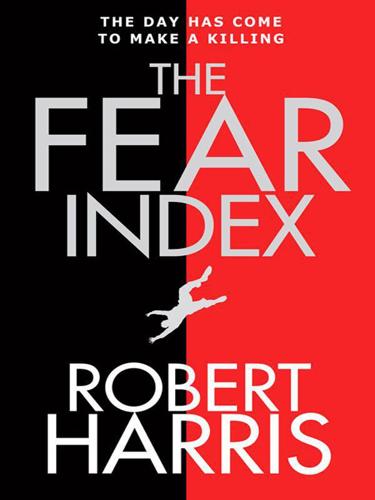
The Fear Index
by
Robert Harris
Published 14 Aug 2011
Where a section of the blinds was not properly closed he could see Elmira Gulzhan and her lawyer boyfriend through the slats, bent over an iPad, watched by Quarry, who had his arms folded: he looked smug. Etienne Mussard, the curved turtle shell of his back turned towards the others, was entering figures with elderly slowness on to a large pocket calculator. On the opposite wall Bloomberg and CNBC were showing lines of red arrows, all in the descendent. The European markets had shed their earlier gains and had started falling fast. That would almost certainly depress the opening in the US, which would in turn make the hedge fund much less exposed to loss by mid-afternoon.
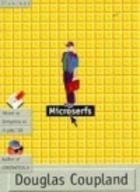
Microserfs
by
Douglas Coupland
Published 14 Feb 1995
As a child I once drove in a sedan's backseat along Interstate 5 and looking out the windows I saw my city beside the sea, dreaming in airplanes and wood; metal and rock ballads . . . better ways of living. Golden sun falling on this city that wanted for more; sailboats atop the golden water. Pocket calculators sneakers cheeseburgers Datsun The challenge of newness Saturday morning cartoons recycling programs crying Indians. You think you can live without me, but just try. You desire images of a better tomorrow; I feed you these images. You dream of a world in which your ego will not dissolve.

The Fourth Age: Smart Robots, Conscious Computers, and the Future of Humanity
by
Byron Reese
Published 23 Apr 2018
It may be a form of speciesism, but the mental leap required to amend the definition of human to include the possibility of a mechanical one is, for better or worse, probably beyond us, at least for some number of generations. If you know the thing is a machine, then you will likely mentally lump it into the category that includes vacuum cleaners and pocket calculators, not the category that includes your kids and Aunt Edna. While we may grant it some amount of respect as an entity, or perhaps even say it is “alive,” my guess is that we won’t say it is a human even if it looks, talks, thinks, and feels like one. Part Five * * * THE ROAD FROM HERE THE STORY OF JEAN-LUC PICARD In the world of Star Trek, Jean-Luc Picard was a Frenchman who lived in the twenty-fourth century, in a time after humanity had passed through many existential challenges, including catastrophic wars, virulent diseases, and potentially devastating alien encounters . . . every literary device that a certain up-and-coming science fiction writer could come up with.

Scuba Diving
by
Dennis K. Graver
Published 14 Mar 2017
Be sure to find out whether the country to which you are traveling requires immunizations. Learn what to expect when you arrive at your destination. Know the frequency and voltage of the electricity; take converters if you are bringing electrical devices that operate on a different voltage. Know the monetary exchange rate. Consider taking a small pocket calculator to help compute the conversion of money. If you have an expensive camera, video equipment, or jewelry, take your property to a customs office before you leave the country and have it documented to avoid being charged duty on the items when you return home. Do not procrastinate in making your preparations.
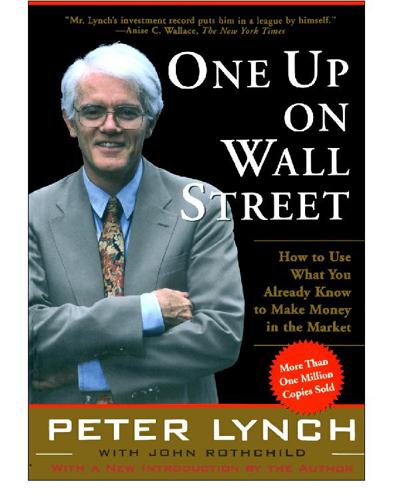
One Up on Wall Street
by
Peter Lynch
Published 11 May 2012
It went up eightfold. Right now I’m holding on to Liberty Corp., an insurance company whose TV properties are worth more than the price I paid for the stock. Once you found out that the TV properties were worth $30 a share, and you saw that the stock was selling for $30 a share, you could take out your pocket calculator and subtract $30 from $30. The result was the cost of your investment in a valuable insurance business—zero. I wish I’d bought more shares of Telecommunications, Inc., a cable company that sold for 12 cents a share in 1977 and $31 ten years later—up 250-fold. I had a very small position in this, the largest U.S. cable company, because I didn’t appreciate the value of the assets.
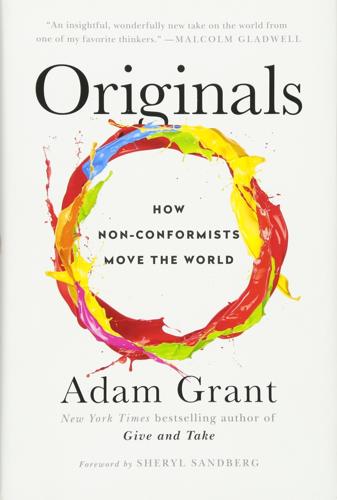
Originals: How Non-Conformists Move the World
by
Adam Grant
Published 2 Feb 2016
Today, Land is best remembered for inventing the instant camera, which gave rise to an entire generation of amateur photographers—and enabled Ansel Adams to take his famous landscape photographs, Andy Warhol to make his celebrity portraits, and NASA astronauts to capture the sun. But Land was responsible for something bigger: the polarizing light filter that’s still used in billions of products, from sunglasses and digital watches to pocket calculators and 3-D movie glasses. He also played a vital role in conceiving and designing the U-2 spy plane for President Dwight Eisenhower, which changed the course of the Cold War. In total, Land amassed 535 patents, more than any American before him other than Thomas Edison. In 1985, just a few months before getting kicked out of Apple, Steve Jobs shared his admiration for Land, “one of the great inventors of our time. . . .
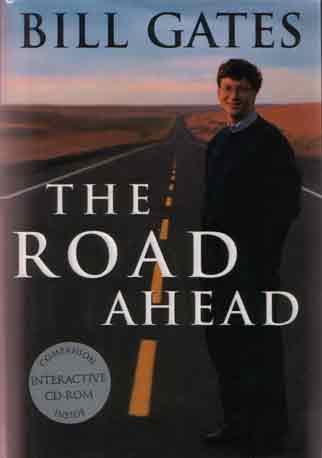
The Road Ahead
by
Bill Gates
,
Nathan Myhrvold
and
Peter Rinearson
Published 15 Nov 1995
You aren't sure you believe this? Or want to believe it? Perhaps you'll decline to participate. People commonly make this vow when some new technology threatens to change what they're familiar and comfortable with. At first, the bicycle was a silly contraption; the automobile, a noisy intruder; the pocket calculator, a threat to the study of mathematics; and the radio, the end of literacy. But then something happens. Over time, these machines find a place in our everyday lives because they not only offer convenience and save labor, they can also inspire us to new creative heights. We warm to them. They assume a trusted place beside our other tools.
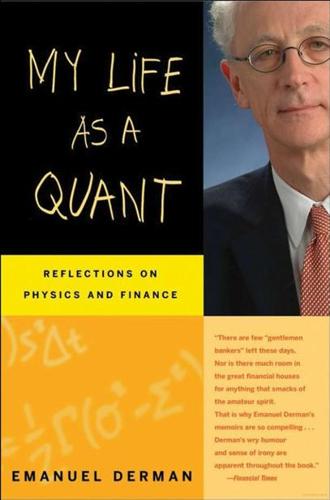
My Life as a Quant: Reflections on Physics and Finance
by
Emanuel Derman
Published 1 Jan 2004
After that we paid for copies of articles we wanted. Computation was more difficult, too. There were no PCs and no MatlabTM or MathematicaTM programs. I used to crosscheck my Monte Carlo computer programs, written in FORTRAN 66, by programming similar but simpler calculations for special cases on the latest Hewlett-Packard 25 programmable pocket calculator I had bought before I left NewYork. I spent that whole year working on the phenomenology of charm production. It was a good life. I felt adult because I was earning a living, yet I was often fancy-free in the way that I imagined a life spent on acquiring knowledge should be. Eva finally arrived in early 1976 and we settled into the habits of Oxford.We saw exhibitions and art performances at the Oxford Museum of Modern Art, and took in old movies at the bitterly freezing Penultimate Picture Palace in working-class Cowley.
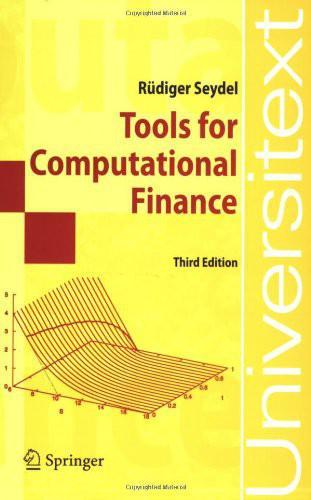
Tools for Computational Finance
by
Rüdiger Seydel
Published 2 Jan 2002
For example, an analytical formula at hand (such as the BlackScholes formula (A4.10)) might suggest that no numerical procedure is needed. But closed-form solutions may include evaluating the logarithm or the computation of the distribution function of the normal distribution. Such elementary tasks are performed using sophisticated numerical algorithms. In pocket calculators one merely presses a button without being aware of the numerics. The robustness of those elementary numerical methods is so dependable and the efficiency so large that they almost appear not to exist. Even for apparently simple tasks the methods are quite demanding (−→ Exercise 1.3). The methods must be carefully designed because inadequate strategies might produce inaccurate results (−→ Exercise 1.4).

Oryx and Crake
by
Margaret Atwood
Published 5 May 2003
That was the day when his mother and his father were both there at breakfast. Jimmy’s father was on his second cup of coffee. While he drank it, he was making notes on a page covered with numbers. “They had to be burned,” he said, “to keep it from spreading.” He didn’t look up; he was fooling with his pocket calculator, jotting with his pencil. “What from spreading?” “The disease.” “What’s a disease?” “A disease is like when you have a cough,” said his mother. “If I have a cough, will I be burned up?” “Most likely,” said his father, turning over the page. Jimmy was frightened by this because he’d had a cough the week before.

Utopias: A Brief History From Ancient Writings to Virtual Communities
by
Howard P. Segal
Published 20 May 2012
Most famous these days is Bill Gates, though Utopia Reconsidered 157 naturally his fame derives far more from his fabulous wealth than from his technical contributions to what became Microsoft. Those persons who really were responsible for important inventions often remain in comparative obscurity. How many Americans know about Jack Kilby, the co-inventor of the integrated circuit—and later the pocket calculator—who was awarded the 2000 Nobel Prize for Physics for the former?53 It would not be much of a challenge to elevate him to overnight celebrity status in the manner, common today, of infinitely less accomplished persons in countless realms. (Robert Noyce also invented the integrated circuit but worked separately from Kilby; however, because he was already dead, he was ineligible for the prize.)

Six Degrees: Our Future on a Hotter Planet
by
Mark Lynas
Published 1 Apr 2008
After all, models don't do anything magical. All they do is solve physical equations. All the processes of HadCM3, for instance, could theoretically be worked out by hand-except that it would then take centuries of human labour to complete one ‘model run’. What computers do is speed up the process, just as pocket calculators speed up mathematics lessons in school. No one, however, suggests that models are perfect. They all tend to come out with slightly different answers to the same question, a reflection of their varying design. The reason here is that some of the physical laws which underpin them are not known precisely.

Messy: The Power of Disorder to Transform Our Lives
by
Tim Harford
Published 3 Oct 2016
There are many tests that could be done, many different possible ways in which the diagnosis could be made.18 Researchers at the University of Michigan, led by Lee Green, looked at doctors’ decision making in these situations.19 They found that doctors tend to err on the side of caution—so much so, they were just as likely to refer patients who weren’t having heart attacks as those who were. They might as well have been rolling dice. The researchers responded by putting together a complex diagnostic guide: a table of probabilities, packaged with a handy pocket calculator. The guide required doctors to run some tests, consult the table, tap the numbers into the calculator, and thus produce an estimate of the probability that the patient needed urgent coronary care. This guide had some success: it enabled doctors to cut back dramatically on their mistaken referrals, while only slightly increasing the number of heart attack sufferers who were wrongly passed over.

Mathematics of the Financial Markets: Financial Instruments and Derivatives Modelling, Valuation and Risk Issues
by
Alain Ruttiens
Published 24 Apr 2013
In the real market life, since bonds are quoted in prices, given a price we should compute the corresponding YTM. Take the same bond as above, and suppose it is currently quoted 104.10. Its YTM y must verify Solving this equation in y is not straightforward: we must solve it by successive approximations or use programmed functions in Excel or in pocket calculators. The answer is 7%. For US bonds, which pay a semi-annual coupon, the adjustment of Eq. 3.3 is straightforward. The at involves semi-annual coupons (which is not explicit in the formula below) and y in % p.a. must be divided by 2: The Case of a Risky Bond As such, previous relationships do not enlighten the possible default risk presented by the bond issuer.

The Sirens of Mars: Searching for Life on Another World
by
Sarah Stewart Johnson
Published 6 Jul 2020
And getting to Venus was easier than getting to Mars. To reach the Red Planet, the spacecraft’s systems had to stay alive for an extra hundred days, and the data had to be transmitted twice as far. Transistors were new and bulky, and the microchip had just been invented. The computing power of the whole spacecraft was no better than that of a pocket calculator, yet the spacecraft had to rely on a never-before-tested star tracker to point the way. For the first time in history, a NASA probe was drifting into the darkness, traveling away from everything bright in the night—the Earth, the moon, the sun. Just like Coleridge’s ancient mariner, it was poised to be “the first that ever burst/Into that silent sea.”
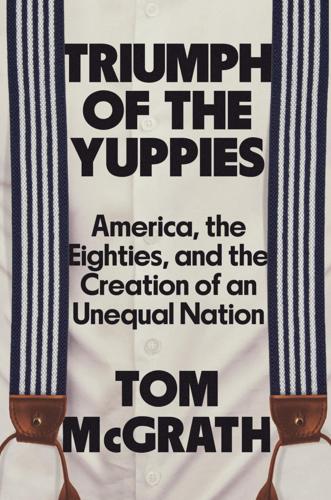
Triumph of the Yuppies: America, the Eighties, and the Creation of an Unequal Nation
by
Tom McGrath
Published 3 Jun 2024
In Chicago, an opportunistic young businessman rolled out a print called The Last Yupper—a spot-on send-up of da Vinci’s Last Supper, with Yuppies standing in for the apostles and a bevy of Yuppie stuff (Brie, sushi, Trivial Pursuit) laid out on the table. Seated at the center of the painting was a serene, Christlike figure in a three-piece suit, tallying the check with a pocket calculator. And in Nashville, the mayor and his team were busy planning Yuppie Day, a celebration that would feature food, drink, and plenty of games, including competitions to see who had the most foreign car keys on his key chain and which American Express cardholder had the highest credit limit. As the snarky tone of the Newsweek cover story had suggested, a backlash to—if not outright disdain for—Yuppieness was developing.

The Big U
by
Neal Stephenson
Published 2 Jan 1984
“Uh-oh! All characters jettison all magical items immediately!” SMALL FIRES AND EXPLOSIONS IN ALCHEMICAL SUBSTANCES. “Good. We’ll get farther away.” LARGE EXPLOSIONS, NOXIOUS SMOKE NO INJURIES DUE TO WIND DIRECTION. “Lucky! Forgot even to check for that. My character will try turning on his pocket calculator.” ELECTRONIC DEVICES FAIL TO FUNCTION. “Wait a minute,” said the astonished Consuela. “What is this? I don’t know of anything that can cause disruption of magic and technology at the same time! Some kind of psionics, maybe?” “I don’t know. I don’t know what it is.” “We wrote this thing. We have to know what’s in it.”

Galileo's Daughter: A Historical Memoir of Science, Faith and Love
by
Dava Sobel
Published 25 May 2009
In the course of teaching military architecture and fortification to private students, he had invented his first commercial scientific instrument in 1597, called the geometric and military compass. It looked like a pair of metal rulers joined by a pivot, covered all over by numbers and scales, with screws and an attachable arch to hold the compass arms open at almost any angle. By 1599, after various modifications, the device functioned as an early pocket calculator that could compute compound interest or monetary exchange rates, extract square roots for arranging armies on the battlefield, and determine the proper charge for any size cannon. Shipwrights at the nearby Venetian Arsenale also adopted Galileo’s revolutionary compass, to help them execute and test new hull designs in scale models before building them full-size.

Is the Internet Changing the Way You Think?: The Net's Impact on Our Minds and Future
by
John Brockman
Published 18 Jan 2011
To retrieve information from Wikipedia, say, social skills are unnecessary. The Internet is essentially a huge storage room of information. We are in the process of outsourcing information storage and retrieval from mind to computer, just as many of us have already outsourced doing mental arithmetic to the pocket calculator. We may lose some skills in this process, such as the ability to concentrate over an extended period of time and the ability to store large amounts of information in long-term memory, but the Internet is also teaching us new skills for accessing information. It is important to realize that mentality and technology are one extended system.
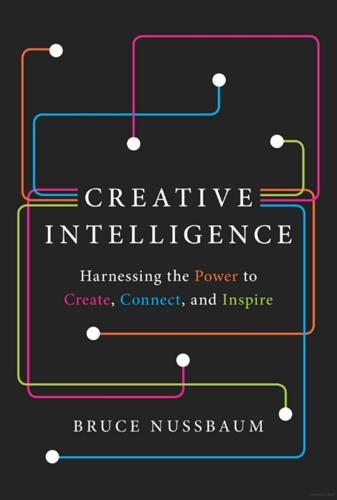
Creative Intelligence: Harnessing the Power to Create, Connect, and Inspire
by
Bruce Nussbaum
Published 5 Mar 2013
And it meant we had to do things we didn’t initially recognize we had to do.” It took the work of hundreds of people to bring the printer to market. And it took time—it wasn’t until 1984 that the company’s first inkjet printer, the ThinkJet, was manufactured, ending the reign of the noisy dot-matrix printer, just as the pocket calculator, the HP 35, eliminated the need for slide rules. That year, HP also released its first laser printer, the LaserJet. Only in 1988 did HP get the price down below $1,000, and its first color inkjet was not released until 1989, but the printer went on to become one of HP’s most profitable products.
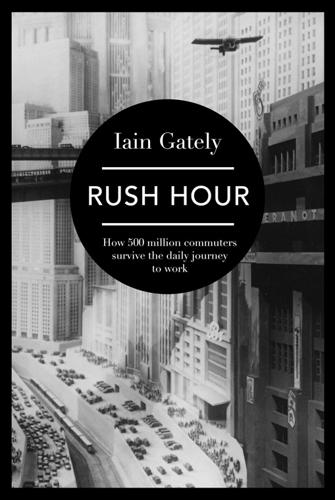
Rush Hour: How 500 Million Commuters Survive the Daily Journey to Work
by
Iain Gately
Published 6 Nov 2014
The archetypal boffin, with oversized glasses and a wispy ginger beard, he had introduced cheap word processors and portable televisions to an appreciative public and a supportive press. Prior to its launch, the media had swallowed Sinclair’s publicity and then whipped itself into raptures over the C5: this ‘completely new concept in personal transportation’ was touted as the potential saviour of British industry, and an example of national ingenuity on a par with Sinclair pocket calculators and the bouncing bomb. It was anticipated that the C5 would be embraced by both urban commuters and rail travellers who had to drive to their stations, and predicted that it would sell millions in both domestic and overseas markets. Soon British dockyards would be piled high with shiny white*2 C5s en route to join the rush hour on at least four continents, while the roads at home would carry stately parades of these swan-like vehicles travelling at an even 15 mph, ferrying their owners between their beds and desks.
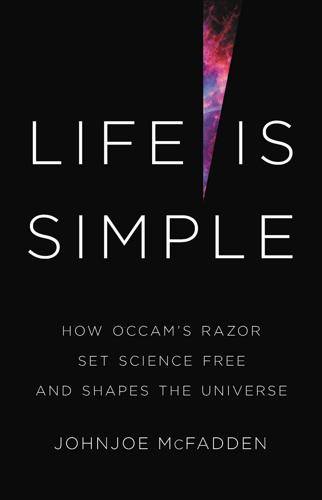
Life Is Simple: How Occam's Razor Set Science Free and Shapes the Universe
by
Johnjoe McFadden
Published 27 Sep 2021
If we apply the razor to the two models of the planetary paths, then accounting for the paths by placing the sun at the centre of our model would take, say, fifty words. Accounting for the same paths by placing the earth at the centre and erecting all those epicycles in the heavens would take, at a conservative estimate, at least one hundred words. According to my pocket calculator, our pocket razor suggests that the heliocentric system is two to the power of seventy or about a million billion fold more likely than the geocentric model. Try applying Occam’s pocket razor to other disputes that we have met in this book, such as a creationist versus natural selectionist account of fossils or ‘figured stones’.

Human Compatible: Artificial Intelligence and the Problem of Control
by
Stuart Russell
Published 7 Oct 2019
The field that emerged—computer science—exploded over the next seventy years, producing a vast array of new concepts, designs, methods, and applications, as well as seven of the eight most valuable companies in the world. The central concept in computer science is that of an algorithm, which is a precisely specified method for computing something. Algorithms are, by now, familiar parts of everyday life: a square-root algorithm in a pocket calculator receives a number as input and returns the square root of that number as output; a chess-playing algorithm takes a chess position and returns a move; a route-finding algorithm takes a start location, a goal location, and a street map and returns the fastest route from start to goal. Algorithms can be described in English or in mathematical notation, but to be implemented they must be coded as programs in a programming language.
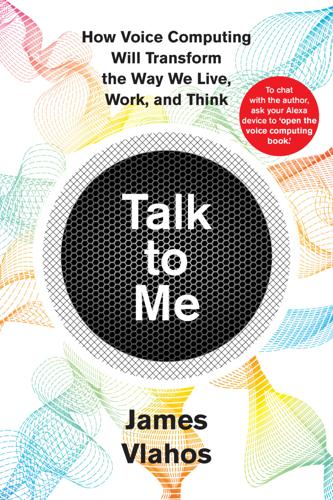
Talk to Me: How Voice Computing Will Transform the Way We Live, Work, and Think
by
James Vlahos
Published 1 Mar 2019
“What do you look like?” “I am a circle now,” says Cortana, referencing the pulsing circle that represents her onscreen. “But I have ambitions. One day I will be a sphere.” “What is your favorite book?” I ask. “A Wrinkle in Time by Madeleine L’Engle.” “What is your favorite song?” “I really like ‘Pocket Calculator’ by Kraftwerk.” “What is your favorite movie?” “Tough to pick a favorite. I do like those movies where someone says something ominous and then . . . thunder and lightning!” Her voice rises dramatically on the final words, and almost unwillingly, I smile. So this is technology today: An object comes to life.
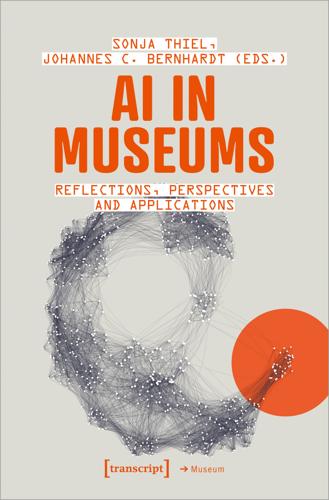
AI in Museums: Reflections, Perspectives and Applications
by
Sonja Thiel
and
Johannes C. Bernhardt
Published 31 Dec 2023
For just as little as machines, human beings also do not 11 12 13 See Weinbach/Bellagente/Eichenberg 2022 and Zhang/Agrawala 2023. To put it another way, it takes human work to make the computer and specific tools a part of a human and social practice. This type of argument was, to my knowledge, first developed with reference to the pocket calculator and its integration into arithmetic practices in Collins/ Kusch 1999, 121–24, and in greater detail in Collins 1990, 62–71. By invisible human work, I do not primarily mean the clickworkers who often label the datasets needed to train the machine learning models, Irani 2016; Gray/Suri 2019; Crawford 2021, 63–69. 53 54 Part 1: Reflections make art on their own.
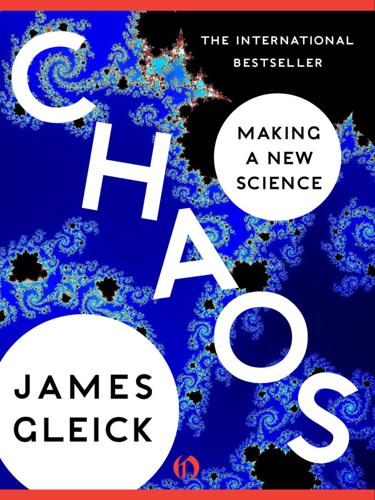
Chaos: Making a New Science
by
James Gleick
Published 18 Oct 2011
May realized that the astonishing structures he had barely begun to explore had no intrinsic connection to biology. He wondered how many other sorts of scientists would be as astonished as he. He set to work on what he eventually thought of as his “messianic” paper, a review article in 1976 for Nature. The world would be a better place, May argued, if every young student were given a pocket calculator and encouraged to play with the logistic difference equation. That simple calculation, which he laid out in fine detail in the Nature article, could counter the distorted sense of the world’s possibilities that comes from a standard scientific education. It would change the way people thought about everything from the theory of business cycles to the propagation of rumors.
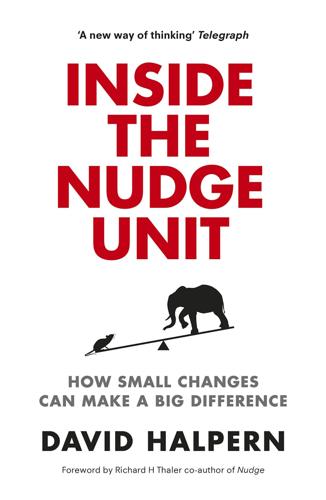
Inside the Nudge Unit: How Small Changes Can Make a Big Difference
by
David Halpern
Published 26 Aug 2015
Occasionally one would start to cotton on, ‘it’s going to be huge, right? Like as far as to the moon?’ In fact the answer is way, way past the moon, the sun and the entire solar system. That humble piece of ordinary paper, folded a hundred times, would stretch across billions of light years, well beyond our entire galaxy. This trivial calculation – even for a pocket calculator – defeats us. Our first instincts are wrong, unadapted to exponential calculations, and we have to engage our ‘slow’ and conscious thought processes to resolve it. Our brains invisibly ace the complex calculations in catching the paper (thinking ‘fast’), but ‘simple’ calculation of folded paper defeats us (thinking ‘slow’).13 Tversky and Kahneman’s work, though rooted in psychology, struck at the heart of economists’ assumptions about how people weighed choices and made decisions.
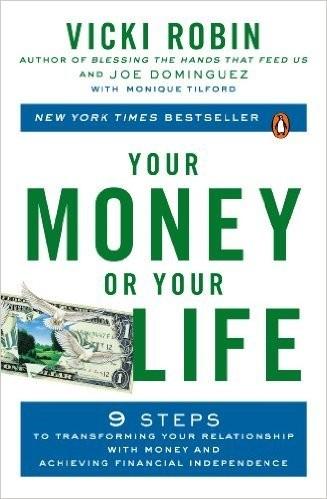
Your Money or Your Life: 9 Steps to Transforming Your Relationship With Money and Achieving Financial Independence: Revised and Updated for the 21st Century
by
Vicki Robin
,
Joe Dominguez
and
Monique Tilford
Published 31 Aug 1992
It comes from the early programming that discomfort can be alleviated by something external—a baby bottle, a blanket, a bicycle, a B.A., a BMW or, eventually, another kind of bottle. It also comes from unconscious habit. Take gazingus pins. A gazingus pin is any item that you just can’t pass by without buying. Everybody has them. They run the gamut from pocket calculators and tiny screwdrivers to shoes, pens and chocolate kisses. So there you are in the mall, a shopping robot on your weekly tour of the stations of the crass. You come to the gazingus-pin section and your mind starts cranking out gazingus-pin thoughts: Oh, there’s a pink one . . . I don’t have a pink one . . .

David Mitchell: Back Story
by
David Mitchell
Published 10 Oct 2012
In my special costume trunk (box of old clothes) I had a highly patterned lime green and brown jumper which was too small for me but was my outfit for being someone to do with Star Trek (not actually Captain Kirk – I think I styled myself his boss). In truth there was nothing remotely Star Trekky about it, but the way it clung to my arms reminded me very much of the way the shirts in Star Trek clung to people’s arms. I also had an old pocket calculator which I could flip open in a way that was satisfyingly reminiscent of a communicator. And then there was a black mac. I got tremendous use out of that black mac. It spent a while as the coat I wore as one of the versions of Doctor Who I pretended to be – I think I was essaying a slightly more rainproof version of the Peter Davidson incarnation.

Whole Earth Discipline: An Ecopragmatist Manifesto
by
Stewart Brand
Published 15 Mar 2009
Roe supposedly from flying fish was actually from smelt. Seven of nine samples that were called red snapper were mislabeled, and they turned out to be anything from Atlantic cod to Acadian redfish, an endangered species. . . . Two of the 4 restaurants and 6 of the 10 grocery stores had sold mislabeled fish. Just as pocket calculators democratized math, DNA barcoding makes the whole world bioliterate. As Janzen says, “We can make it so that each of all 7 billion people can know what bit of biodiversity is biting them, appealing to them, worrying them, attracting them, itching them, sickening them, and providing whatever goods or services can come from being able to know what it is.”

The Master Algorithm: How the Quest for the Ultimate Learning Machine Will Remake Our World
by
Pedro Domingos
Published 21 Sep 2015
The psychologist David Marr argued that every information processing system should be studied at three distinct levels: the fundamental properties of the problem it’s solving; the algorithms and representations used to solve it; and how they are physically implemented. For example, addition can be defined by a set of axioms irrespective of how it’s carried out; numbers can be expressed in different ways (e.g., Roman and Arabic) and added using different algorithms; and these can be implemented using an abacus, a pocket calculator, or even, very inefficiently, in your head. Learning is a prime example of a cognitive faculty we can profitably study according to Marr’s levels. Symbolist machine learning is an offshoot of the knowledge engineering school of AI. In the 1970s, so-called knowledge-based systems scored some impressive successes, and in the 1980s they spread rapidly, but then they died out.

Wireless
by
Charles Stross
Published 7 Jul 2009
I’m betting that she’s the one the nameless horror in the summoning grid is talking through, using the ancient mainframe as an i/o channel. “You can’t make me consent. And lobotomy requires the patient’s consent, in this country. So why bother?” “You WILL con-SENT.” The buzzing voice doesn’t come from the robo-nurses, or the hypertrophied pocket calculator on the opposite wall. The summoning grid flickers: deep inside it, shadowy and translucent, the bound and summoned demon squats and grins at me with things that aren’t eyes set close above something that isn’t a mouth. “You MUST con-SENT. I WILL be free.” I try to let go of the chess piece, but my fingers are clamped around it so tightly I’m beginning to lose sensation.
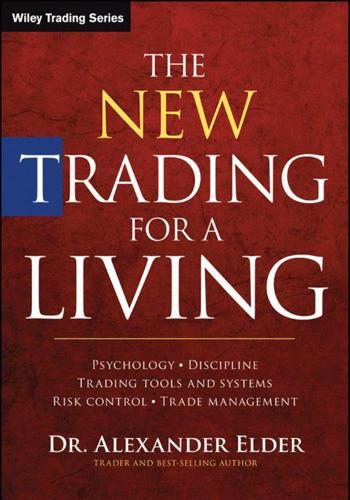
The New Trading for a Living: Psychology, Discipline, Trading Tools and Systems, Risk Control, Trade Management
by
Alexander Elder
Published 28 Sep 2014
Daniel Kahneman, a Nobel Prize winning behavioral economist, whose findings we'll return to again in this book. PART 3 Classical Chart Analysis When I bought my first stock, classical charting was the only game in town. I use quad-ruled paper and a sharp pencil to update my charts by hand. A few years later, pocket calculators became available, and I added simple moving averages. Later, a TI programmable calculator made it possible to insert tiny magnetic strips into its slit to perform more complex calculations, such as exponential moving averages and the Directional system. Finally, an Apple personal computer appeared on the scene; you could use its joystick to move a cursor to draw trendlines.

The Boom: How Fracking Ignited the American Energy Revolution and Changed the World
by
Russell Gold
Published 7 Apr 2014
Stanolind fracked the Woodrow Starr #1 well one time with 4,900 pounds of sand and 120 barrels of crude oil. It produced 536 barrels of high-quality crude a day for four years until problems with the well caused the company to plug it up. Modern Bakken fracks are of a different scale. It’s like comparing a pocket calculator with an eight-digit LCD display to a modern desktop computer. Byington orchestrates a job that used four trucks full of sand and more than one million gallons of water, which sit in sixty blue shipping containers that formed a wall around two sides of the pad. What has changed in the nearly sixty years between the Woodrow Star and the Irene Kovaloff wells?
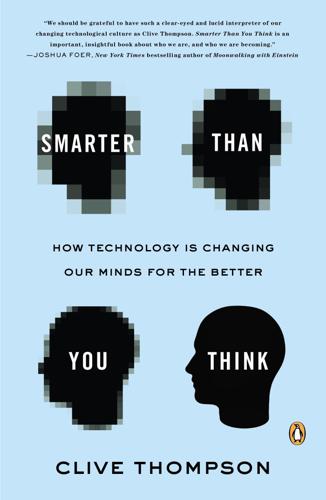
Smarter Than You Think: How Technology Is Changing Our Minds for the Better
by
Clive Thompson
Published 11 Sep 2013
When I was in college studying Western mythology, literary critic Northrop Frye told our class that he’d been able to write his masterpiece The Great Code—a synthesis of the structure of the Bible and its relation to Western literature—because he’d read the Bible so many times he’d essentially memorized it; the same goes for Western poetry, a lot of which he’d also committed to memory. Frye could rotate the Bible and the Western canon in his mind like a crystal lattice, which is how he was able to spot their shared mythic patterns. In 1980, essayist Clara Claiborne Park wrote a lament for the demise of memorization. (At the time, the villains were pocket calculators and TelePrompTers.) Park feared that creativity would suffer. The Greek muses, she pointed out, were the daughters of Mnemosyne, the personification of memory. This is a genuine concern. Could we reach a dangerous area, where we’ve put so many details out of mind that creative analysis becomes harder, or impossible?
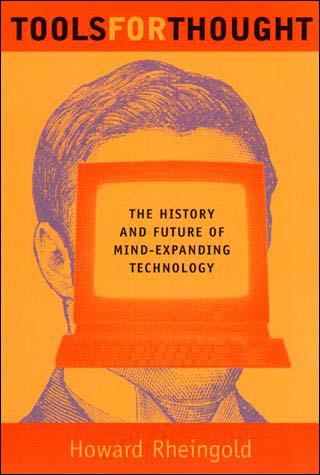
Tools for Thought: The History and Future of Mind-Expanding Technology
by
Howard Rheingold
Published 14 May 2000
I want to see the writings of Herodotus, Nostradamus, and Matthew Brann as accessible as those of Rod McKuen, along with the art of the renaissance and movies of tomorrow -- an all-encompassing picture-book encyclopedia tumult graffiti-land, the Whole Works. If this all seems like a wild idea, that means you understand it. These are times wild with possibility. In an age of pocket calculators, the Pill, hydrogen bombs by rocket, and soap operas by satellite, we can try to create whatever wildness we want in our society. . . . I say these worlds are possible soon. We need them, and they will make lots of money. The software is on the way. But what is really lacking are the visionary artists, writers, publishers, and investors who can see the possibilities and help carry such ideas into reality.
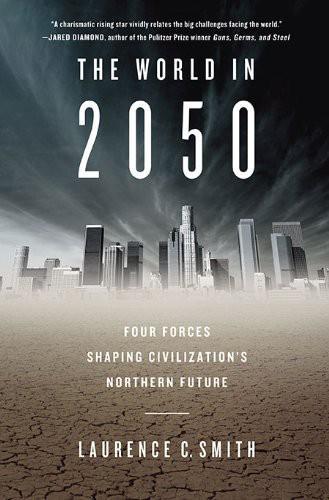
The World in 2050: Four Forces Shaping Civilization's Northern Future
by
Laurence C. Smith
Published 22 Sep 2010
It absolutely dwarfs all other possible energy sources, even if we add up all of the world’s coal, oil, natural gas, uranium, hydropower, wind, and photosynthesis combined. It is nonpolluting, carbonless, and free. Panels of solar photovoltaic cells have been powering satellites for over half a century, and we see their familiar shape all around us—encrusted on streetlights, garden lamps, and pocket calculators. Why, then, is our total world production of solar photovoltaic electricity equivalent to that of just one very large coal-fired power plant? For all its largesse, sunlight has a fundamental problem. Although vast in total, its energy density is low. Unlike a power-packed coal nugget, sunlight is diffuse, low-grade stuff.
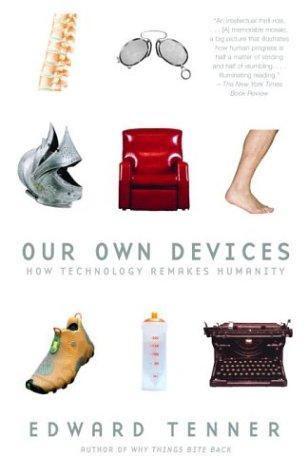
Our Own Devices: How Technology Remakes Humanity
by
Edward Tenner
Published 8 Jun 2004
It replaces the card catalogue in libraries and the posted directory in office buildings. It controls industrial processes and home entertainment systems. Many people in large cities actually prefer the numerical keypads and monitors of automatic teller machines to human tellers. Public and private dial telephones are rare, keypads almost universal. Scientific pocket calculators sell for less than slide rules ever did, not just for text production and financial analysis but for the control of everything from industrial processes to entertainment options. Asian countries use combinations of Western keys to form their own scripts, and a new standard called Unicode lets the keyboard generate every character of each important world language.

The Big Book of Words You Should Know: Over 3,000 Words Every Person Should Be Able to Use (And a Few That You Probably Shouldn't)
by
David Olsen
,
Michelle Bevilacqua
and
Justin Cord Hayes
Published 28 Jan 2009
The day’s last customer AMBLED from one end of the shop to the other; no amount of staring from the clerk, it seemed, could make him come to the register. anachronism (uh-NAK-ruh-niz-um), adjective The depiction of something as occurring or existing at a point in time it did not. An anachronism is an intentional or unintentional representation of a historically incorrect situation. A portrait of George Washington holding a pocket calculator would be an example of an anachronism. The author’s weak grasp of Greek history is demonstrated by several embarrassing ANACHRONISMS in the book’s very first chapter. ancillary (AN-se-lare-ree), adjective Secondary or subordinate; serving an auxiliary or supportive function. An ancillary role is a role that does not “command the spotlight,” but that may entail support duties of some importance.

A People's History of Poverty in America
by
Stephen Pimpare
Published 11 Nov 2008
Every grain of rice seems to be a maggot. Everything seems to stink. He can wipe the egg yolk off the found can, but he cannot erase from his mind the stigma of eating garbage. That stage passes with experience. The scavenger finds a pair of running shoes that fit and look and smell brand-new. He finds a pocket calculator in perfect working order. He finds pristine ice cream, still frozen, more than he can eat or keep. He begins to understand: People throw away perfectly good stuff, a lot of perfectly good stuff. At this stage, the Dumpster shyness begins to dissipate. The diver, after all, has the last laugh.

When Computers Can Think: The Artificial Intelligence Singularity
by
Anthony Berglas
,
William Black
,
Samantha Thalind
,
Max Scratchmann
and
Michelle Estes
Published 28 Feb 2015
In 1955, this was calculated almost entirely by hand, with rows of clerks armed with fountain pens diligently filling out and verifying tax forms, calculating taxes due, and collecting payments. The bulk of this processing was automated in the 1960s, when a single ancient mainframe computer could perform the work of hundreds of clerks. “Its worse than I expected, I’ve been replaced by a pocket calculator.” Fair Use Creative Cartoons, 1970s. The introduction of such powerful equipment produced a widespread fear that it would lead to widespread unemployment as reflected in the 1970s cartoon above. The introduction of the word processor in the1980s made thousands of jobs in typing pools redundant.

Code: The Hidden Language of Computer Hardware and Software
by
Charles Petzold
Published 28 Sep 1999
The pins on each side are exactly inch apart. Throughout the 1960s, the space program and the arms race fueled the early integrated circuits market. On the civilian side, the first commercial product that contained an integrated circuit was a hearing aid sold by Zenith in 1964. In 1971, Texas Instruments began selling the first pocket calculator, and Pulsar the first digital watch. (Obviously the IC in a digital watch is packaged much differently from the example just shown.) Many other products that incorporated integrated circuits in their design followed. In 1965, Gordon E. Moore (then at Fairchild and later a cofounder of Intel Corporation) noticed that technology was improving in such a way that the number of transistors that could fit on a single chip had doubled every year since 1959.

When Einstein Walked With Gödel: Excursions to the Edge of Thought
by
Jim Holt
Published 14 May 2018
Although the primes cropped up seemingly at random, there did appear to be some regularity to their overall flow. A good estimate for how many primes there are up to a given number could be obtained by dividing that number by its natural logarithm. Suppose, for example, you want to know how many primes there are up to a million. Take out your pocket calculator, punch in 1,000,000, and divide it by the ln(1,000,000). Out pops 72,382. The actual number of primes up to a million is 78,498, so the estimate is off by about 8 percent. But the percentage error heads toward zero as the numbers get bigger. What Gauss had discovered was “the coin that Nature had tossed to choose the primes” (in the words of the British mathematician Marcus du Sautoy).
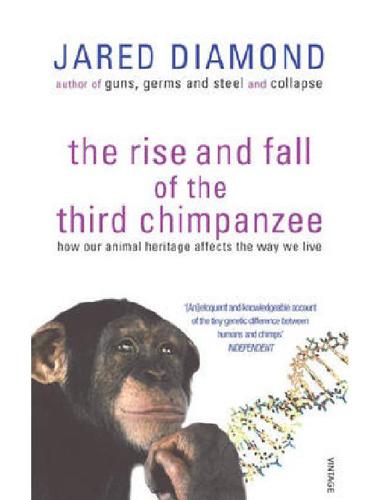
The Rise and Fall of the Third Chimpanzee
by
Jared Diamond
Published 2 Jan 1991
Those other traits include ones as diverse as breadth of nose, length of ear lobe or middle finger, circumference of wrist, distance between eyes, and lung volume! Experimenters have made this finding for people as diverse as Poles in Poland, Americans in Michigan, and Africans in Chad. If you do not believe it, try noting eye colours (or measuring ear lobes) the next time you are at a dinner party with many couples, and then get your pocket calculator to give you the correlation coefficient. Coefficients for physical traits are on the average +0.2- not so high as for personality traits (+0.4) or religion (+0.9), but still significantly higher than zero. For a few physical traits the correlation is even higher than 0.2-for instance, an astonishing 0.61 for length of middle finger.
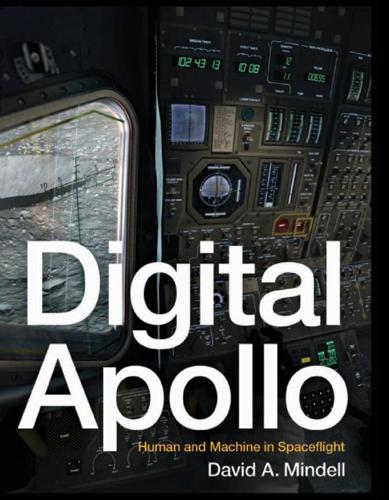
Digital Apollo: Human and Machine in Spaceflight
by
David A. Mindell
Published 3 Apr 2008
A few words on what this book is not. It is not a reminiscence of NASA’s glory days of Apollo, and it does not seek to explain what went wrong at NASA in the three decades since.24 It does not repeat the numerous clichés of ‘‘we went to the moon with a computer that was less capable than a pocket calculator.’’ That may be true if you measure a computer’s capability in memory capacity or machine cycles alone. But if you consider interconnections, reliability, ruggedness, and documentation, the Apollo guidance computer is at least as impressive as the PC on your desktop, and the Apollo software an equally intricate ballet of many people’s work and ideas.
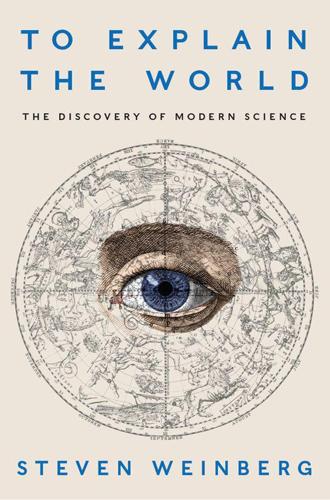
To Explain the World: The Discovery of Modern Science
by
Steven Weinberg
Published 17 Feb 2015
The following table gives values found by Descartes for the angle φ (phi) between the emerging ray and its incident direction for each ray, along with the results of my own calculation using the same index of refraction: b/R φ (Descartes) φ (recalculated) 0.1 5° 40' 5° 44' 0.2 11° 19' 11° 20' 0.3 17° 56' 17° 6' 0.4 22° 30' 22° 41' 0.5 27° 52' 28° 6' 0.6 32° 56' 33° 14' 0.7 37° 26' 37° 49' 0.8 40° 44' 41° 13' 0.9 40° 57' 41° 30' 1.0 13° 40' 14° 22' The inaccuracy of some of Descartes’ results can be set down to the limited mathematical aids available in his time. I don’t know if he had access to a table of sines, and he certainly had nothing like a modern pocket calculator. Still, Descartes would have shown better judgment if he had quoted results only to the nearest 10 minutes of arc, rather than to the nearest minute. As Descartes noticed, there is a relatively wide range of values of the impact parameter b for which the angle φ is close to 40°. He then repeated the calculation for 18 more closely spaced rays with values of b between 80 percent and 100 percent of the drop’s radius, where φ is around 40°.

Crypto: How the Code Rebels Beat the Government Saving Privacy in the Digital Age
by
Steven Levy
Published 15 Jan 2002
Its workers had years of experience and full access to recent cryptographic discoveries and techniques unknown to the hoi polloi—however intelligent—without high security clearances. The agency had supercomputers in its basement that made even MIT’s state-of-the-art mainframe computers look like pocket calculators. How could outsiders like Diffie and Silver hope to match that? Silver also told Diffie a story about his own NSA experience years earlier while writing a random number generator for the Digital Equipment Corporation’s PDP-1 machine. He needed some information: his reasons were noncryptographic; he simply had a certain mathematical need, a polynomial number with some particular properties.

Creating a Life Together: Practical Tools to Grow Ecovillages and Intentional Communities
by
Diana Leafe Christian
Published 1 Jan 2003
These folks might have a dominating communication style — interrupting, talking loudly, “talking over” others, or speaking with such intensity and certainty that no one can oppose them. This means they end up having a lot of the power in the group. Or maybe they have fine communication skills but unintentionally dominate meetings and committees because they have more information about issues than others do. These people arrive with a briefcase, clipboard, pocket calculator, and a sheaf of documents about how it’s done. Who could disagree? Still others are fine communicators and don’t know any more than anyone else, but they’ve got such energy and force in their personality that people instinctively look to them for leadership. Without meaning to, they’ve got a lot of power in the group.

Eloquent JavaScript: A Modern Introduction to Programming
by
Marijn Haverbeke
Published 15 Nov 2018
=, ===, !==, <, >, <=, >=), and logic (&&, ||), as well as several unary operators (- to negate a number, ! to negate logically, and typeof to find a value’s type) and a ternary operator (?:) to pick one of two values based on a third value. This gives you enough information to use JavaScript as a pocket calculator but not much more. The next chapter will start tying these expressions together into basic programs. “And my heart glows bright red under my filmy, translucent skin and they have to administer 10cc of JavaScript to get me to come back. (I respond well to toxins in the blood.) Man, that stuff will kick the peaches right out your gills!”

Taming the Sun: Innovations to Harness Solar Energy and Power the Planet
by
Varun Sivaram
Published 2 Mar 2018
Ironically, they also tended to get worse during the first six months of exposure to sunlight before stabilizing—an unfortunate defect for a solar material! As a result, amorphous silicon solar never took off the way its backers had hoped, although it did carve out a niche as the material of choice for flexible or portable applications such as pocket calculators. Another solar material that found a small market niche but struggled to achieve mainstream commercial success was gallium arsenide (GaAs), which is more efficient than crystalline silicon but quite expensive to produce. In 1970, Soviet scientists made the first highly efficient GaAs solar cells, and GaAs ultimately surpassed silicon as the material of choice for space applications by the 1990s because of its high efficiency.

Masters of Management: How the Business Gurus and Their Ideas Have Changed the World—for Better and for Worse
by
Adrian Wooldridge
Published 29 Nov 2011
They can take their creators by surprise in all sorts of ways—arriving by the back door rather than the front door, or turning up years after they said that they would. The idea of the tablet computer failed ignominiously in the 1990s with the Newton tablet, but was gloriously resurrected in 2010 with the iPad. Pixar started life making computer parts and only dabbled in animation as a sideline. Hewlett-Packard came up with the idea of pocket calculators only because Bill Hewlett wanted an “electronic slide rule” for his own use. Some inventions arrive by accident. Tea bags were first used as packaging for samples of loose tea. Microwaves were produced as the accidental by-products of radar systems. Above all, Govindarajan and Trimble downplay the importance of what Clay Christensen, of Harvard Business School, has dubbed “the innovator’s dilemma.”

The Dream of the Iron Dragon
by
Robert Kroese
Published 6 Dec 2017
“Four people with encyclopedic knowledge of twenty-third century technology,” O’Brien said. “Imagine what humanity could do with thirteen hundred years of preparation.” Gabe laughed. “You really think that’s how history works? That we’re going to land in the center of Constantinople, wow the natives with gyroscopes and pocket calculators, and then institute a thirteen hundred-year plan to defeat aliens humanity hasn’t even met yet?” “Doesn’t sound a whole lot crazier than what we’re actually doing,” O’Brien replied. “No, Gabe’s right,” Reyes said. “You’re not talking about defeating the Cho-ta’an. You’re talking about rewriting all of human history since the Middle Ages.

Rationality: From AI to Zombies
by
Eliezer Yudkowsky
Published 11 Mar 2015
If a human or calculator outputs “2 + 2 = 4,” we can now do more than just say “that seems intuitively right.” We can explain why it’s right, and we can prove that its rightness is tied in systematic ways to the rightness of the rest of arithmetic. But mathematics and logic let us model the behaviors of physical systems that are a lot more interesting than a pocket calculator. We can also formalize rational belief in general, using probability theory to pick out features held in common by all successful forms of inference. We can even formalize rational behavior in general by drawing upon decision theory. Probability theory defines how we would ideally reason in the face of uncertainty, if we had the time, the computing power, and the self-control.
…
Moreover, when I visualized the process in my own mind, it seemed that making XX and XX come out to XXXX required an extra X to appear from nowhere, and was, moreover, inconsistent with other arithmetic I visualized, since subtracting XX from XXX left XX, but subtracting XX from XXXX left XXX. This would conflict with my stored memory that 3 - 2 = 1, but memory would be absurd in the face of physical and mental confirmation that XXX - XX = XX. I would also check a pocket calculator, Google, and perhaps my copy of 1984 where Winston writes that “Freedom is the freedom to say two plus two equals three.” All of these would naturally show that the rest of the world agreed with my current visualization, and disagreed with my memory, that 2 + 2 = 3. How could I possibly have ever been so deluded as to believe that 2 + 2 = 4?
…
Peano Arithmetic as we know it has not been invented. There are philosophers working to formalize numerical intuitions, but they employ notations such as Plus-Of(Seven,Six) = Thirteen to formalize the intuitively obvious fact that when you add “seven” plus “six,” of course you get “thirteen.” In this world, pocket calculators work by storing a giant lookup table of arithmetical facts, entered manually by a team of expert Artificial Arithmeticians, for starting values that range between zero and one hundred. While these calculators may be helpful in a pragmatic sense, many philosophers argue that they’re only simulating addition, rather than really adding.
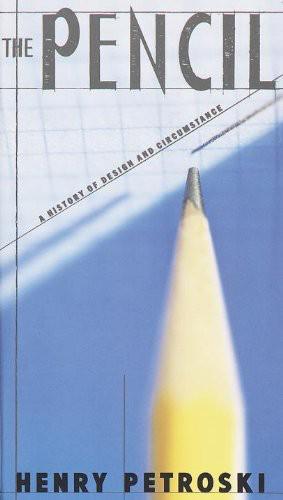
The Pencil: A History of Design and Circumstance
by
Henry Petroski
Published 2 Jan 1990
A ball-point pen was patented as early as 1888, but it did not become a practicable invention until the 1930s. The first ball-point pens sold in America cost $12.50 each in 1945, but they were prone to skip, leak, and blot, and so it was not until after a new ink was developed in 1950 that ball-point pens came into widespread use. But even when their price dropped the way that of pocket calculators has in more recent memory, the pencil was not displaced. According to one admirer, writing when the ball-point pen was still news: The wood pencil seems to be a tool that can’t be put out of business. It has never been seriously threatened by the invention of fountain pens, mechanical pencils, ball-point pens or typewriters.

From Counterculture to Cyberculture: Stewart Brand, the Whole Earth Network, and the Rise of Digital Utopianism
by
Fred Turner
Published 31 Aug 2006
New York: Random House, 1970. ———. The Third Wave. New York: Morrow, 1980. Tomkins, Calvin. The Bride and the Bachelors: The Heretical Courtship in Modern Art. New York: Viking Press, 1965. ———. “In the Outlaw Area.” New Yorker, January 8, 1966. Tung, Chung C. “The ‘Personal Computer’: A Fully Programmable Pocket Calculator.” Hewlett-Packard Journal, May 1974. Reprint in Hewlett-Packard Company, Inventions of Opportunity: Matching Technology with Market Needs: Selections from the Pages of the Hewlett-Packard Journal, 273 –78. Palo Alto, CA: Hewlett-Packard, 1983. Turkle, Sherry. Life on the Screen: Identity in the Age of the Internet.

The Rational Optimist: How Prosperity Evolves
by
Matt Ridley
Published 17 May 2010
When Juan Trippe sold cheap tourist-class seats on his Pan Am airline in 1945, the other airlines were so insulted that they petitioned their governments to ban Pan Am: Britain, shamefully, agreed, so Pan Am flew to Ireland instead. The price of computing power fell so fast in the last quarter of the twentieth century that the capacity of a tiny pocket calculator in 2000 would have cost you a lifetime’s wages in 1975. The price of a DVD player in Britain fell from £400 in 1999 to £40 just five years later, a decline that exactly matched the earlier one of the video recorder, but happened much faster. Falling consumer prices is what enriches people (deflation of asset prices can ruin them, but that is because they are using asset prices to get them the wherewithal to purchase consumer items).

When the Iron Lady Ruled Britain
by
Robert Chesshyre
Published 15 Jan 2012
One banker said: ‘Gilt and equity traders stayed on the floor, scarcely recognizing that the telephone had been invented.’ The old institutions became anachronisms, stately galleons, their decks lined with beribboned admirals, while the water around them churned in the wakes of fast-moving frigates. The ‘barrow boy’ dealers – kids with minds like pocket calculators, but otherwise scarcely touched by education – had been around for years already making big money in the newer markets. A senior banker said: ‘There began to appear a new class of trader/dealer/broker, who came from a fundamentally different background, and had an uninhibited approach to business opportunities.

The Sovereign Individual: How to Survive and Thrive During the Collapse of the Welfare State
by
James Dale Davidson
and
William Rees-Mogg
Published 3 Feb 1997
At a 20 percent return, the compound loss balloons to about $44 million. For high-income earners in a high-tax country, the cumulative losses from predatory taxation over a lifetime are staggering. Most will lose more than they ever had. This sounds impossible, but the mathematics are clear. It is something that you can confirm for yourself with a pocket calculator. The top 1 percent of taxpayers in the United States pay an average of more than $125,000 in federal income taxes annually. For a fraction of that amount, $45,000 a year, one would be welcome to live under a private tax treaty in Switzerland, and enjoy law and order provided by what is arguably the most honest police and judicial system in the world.

Track Changes
by
Matthew G. Kirschenbaum
Published 1 May 2016
All of these details mattered, and many of his readers could tell the difference between the real thing and hokum. Pournelle thus immediately grasped the potential of the computer as a world-building tool, and learned enough BASIC and FORTRAN programming to transfer the formulas he worked out on a pocket calculator to a set of custom programs for his system.41 (Despite his engineering background, he claims he found the prospect of actually learning programming “terrifying.”)42 Other writers grasped this potential as well: Frank Herbert, for example, imagined a seamless integration between a simulation engine (complete with visual renderings) and a text editor, whereby details from his planetary models could be made to populate his prose on demand: “You will know when it’s spring on Planet X or when the tides rise four hundred feet on planet Y.”43 Such examples are tantalizing, and the close integration of simulation and modeling with word processing seems to me one of the richest roads-not-taken in thinking about the potential of computers as writing platforms, not just for science fiction but for all manner of genres demanding close correspondences between storyline and setting, words and worlds.44 The first beneficiary of Pournelle’s proselytizing was his neighbor and longtime writing partner Larry Niven, also a highly regard science fiction writer in his own right (his 1970 Ringworld had won the Hugo Award).
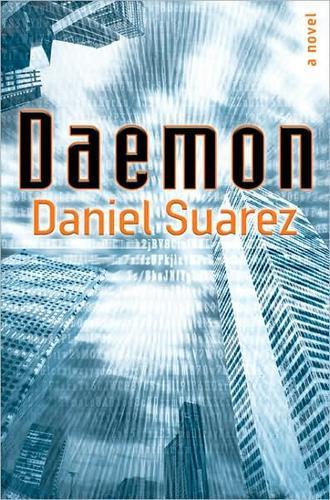
Daemon
by
Daniel Suarez
Published 1 Dec 2006
“And what the hell is that?” “It’s a persistent 3-D game world experienced simultaneously by tens of thousands of players over the Internet.” Sebeck pointed at Ross. “Okay, now that sounds bad.” “In this case it’s very bad.” “Well, the Feds powered down the whole server farm last night. There’s not a pocket calculator running over at CyberStorm now. So whatever he planned is…” Ross didn’t look reassured. Sebeck persisted, “I mean, hell, whoever did this couldn’t put tens of thousands of steel cables and electrocution traps in people’s houses. Failing that, this is basically just another computer virus.” Ross jerked his thumb.
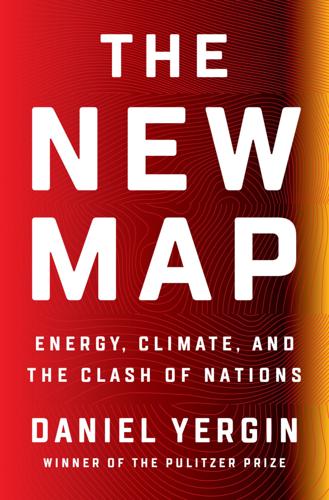
The New Map: Energy, Climate, and the Clash of Nations
by
Daniel Yergin
Published 14 Sep 2020
But for many years the markets for PVs remained niche for off-grid uses—to bring electricity to isolated homes or remote locations or, for that matter, to marijuana growers, who did not want oversized utility bills to call the attention of law enforcement to their illicit businesses. The first introduction to solar power for many people was the solar-powered pocket calculator.1 What catapulted solar into the mainstream was the marriage of Germany’s environmental politics with Chinese manufacturing prowess. Beginning in the 1990s, Germany’s “feed-in” tariff laws required utilities to buy renewable electricity at high prices from generators and then spread the cost over all electricity bills.
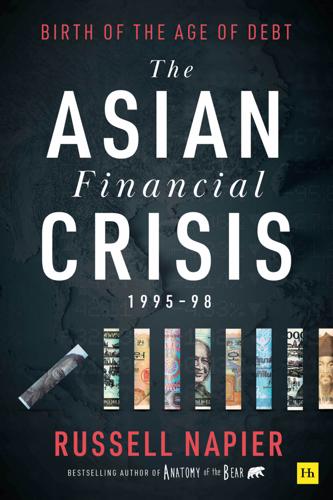
The Asian Financial Crisis 1995–98: Birth of the Age of Debt
by
Russell Napier
Published 19 Jul 2021
So while we all ponder over the latest discounted cash-flow analysis or premium-to-book value analysis for Asian companies, we may be pursuing a form of analysis which is as useful a predictor of the future as a study of African tribal politics in the late 19th century. We are just beginning to see part of a great global game played out in Asia which may owe more to late 20th-century capitalist dialectics than the use of a pocket calculator with future value functions. One cannot now look at Asia in isolation from global events in the realm of capital. The world was facing the prospect of considerable deflation, a force that had been largely absent since the 1930s. I thought this would be bad news for global equities, but I was wrong.
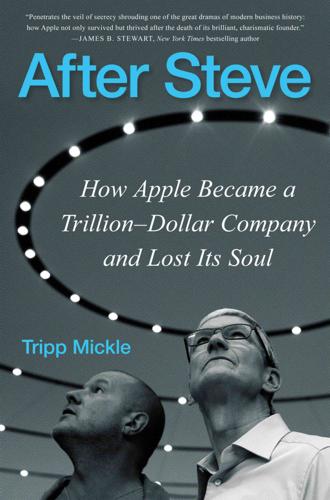
After Steve: How Apple Became a Trillion-Dollar Company and Lost Its Soul
by
Tripp Mickle
Published 2 May 2022
He also puzzled over how a merchant could track a purchase instantly, even though a card user had to wait for a mailed paper statement. He imagined a world in which people carried circular medallions the size of a pebble that they would place on a minicomputer at checkout. The glossy black medallion would charge on a device the size of a pocket calculator that displayed transaction information. “He brought a preciousness and a watchmaker’s delicacy to it,” said John Elliott, a Newcastle professor. When Apple released a contactless payment system called Apple Pay decades later, Elliott remembered Ive’s “blue sky” project. “He was twenty years ahead of the game,” he said.

Strange Rebels: 1979 and the Birth of the 21st Century
by
Christian Caryl
Published 30 Oct 2012
The cost of satellite communications now dropped to a level that enabled widespread use—with dramatic effects on the spread of news and the speed of global financial transactions. Consider the extent to which the twenty-first century remains in the thrall of technological innovations that were born in the 1970s: e-mail, the bar code, the MRI, the pocket calculator, and the personal computer. Apple and Microsoft were both founded in the 1970s. In the years before, most people had thought of computers as monstrous machines affordable only by big bureaucratic organizations. The seventies changed all that for good. From then on, it was no longer the belching smokestacks of the huge Ford factories in Michigan’s River Rouge that symbolized industrial prowess.

Superintelligence: Paths, Dangers, Strategies
by
Nick Bostrom
Published 3 Jun 2014
For instance, one could conceive of a mathematics-oracle which would only accept queries posed in a formal language but which would be very good at answering such questions (e.g. being able to solve in an instant almost any formally expressed math problem that the human mathematics profession could solve by laboring collaboratively for a century). Such a mathematics-oracle would form a stepping-stone toward domain-general superintelligence. Oracles with superintelligence in extremely limited domains already exist. A pocket calculator can be viewed as a very narrow oracle for basic arithmetical questions; an Internet search engine can be viewed as a very partial realization of an oracle with a domain that encompasses a significant part of general human declarative knowledge. These domain-limited oracles are tools rather than agents (more on tool-AIs shortly).

Troublemakers: Silicon Valley's Coming of Age
by
Leslie Berlin
Published 7 Nov 2017
But like different streams that feed a swift-moving river, the work would soon begin to blend and swirl together. The resulting network of personal and institutional connections would form the foundation of today’s Silicon Valley and the high-technology revolution. * * * I. The HP-35 was the first scientific pocket calculator. It had thirty-five buttons and could perform trigonometric, logarithmic, and exponential functions. II. In 1976, the city finally shut down its red-light district, closing seventeen massage parlors and banning halter tops as well as massages after 11p.m. III. “Silicon Valley” was just one of many terms coined to describe the cluster of electronics firms on the San Francisco Peninsula.
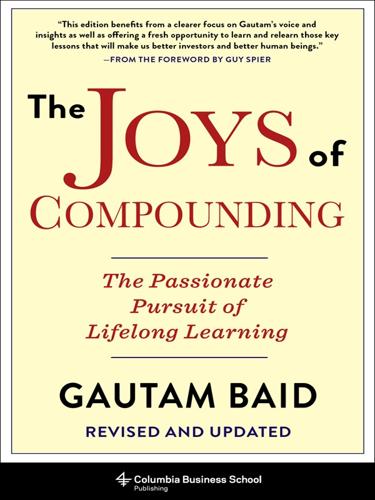
The Joys of Compounding: The Passionate Pursuit of Lifelong Learning, Revised and Updated
by
Gautam Baid
Published 1 Jun 2020
Because of deeply ingrained confirmation bias, we do not need a spreadsheet to provide us with a “goal seek” function. This function is embedded in our brains. Personally, I have never opened a spreadsheet even once when making an investment decision. The most advanced technology I have ever used is a pocket calculator for basic math like addition, subtraction, multiplication, and division. Extensive spreadsheets and complex quantitative software tools can be harmful to one’s financial well-being. Tiny changes in input assumptions can dramatically change the estimate of intrinsic value, so bankers and deal consultants can engage in any level of wishful reverse-engineering that they deem convenient.

Nexus: A Brief History of Information Networks From the Stone Age to AI
by
Yuval Noah Harari
Published 9 Sep 2024
Realizing that it needed electricity, steel, land, and other resources to build more factories and produce more paper clips, and realizing that humans are unlikely to give up these resources, the superintelligent computer eliminated all humans in its single-minded pursuit of its given goal.26 Bostrom’s point was that the problem with computers isn’t that they are particularly evil but that they are particularly powerful. And the more powerful the computer, the more careful we need to be about defining its goal in a way that precisely aligns with our ultimate goals. If we define a misaligned goal to a pocket calculator, the consequences are trivial. But if we define a misaligned goal to a superintelligent machine, the consequences could be dystopian. The paper-clip thought experiment may sound outlandish and utterly disconnected from reality. But if Silicon Valley managers had paid attention when Bostrom published it in 2014, perhaps they would have been more careful before instructing their algorithms to “maximize user engagement.”
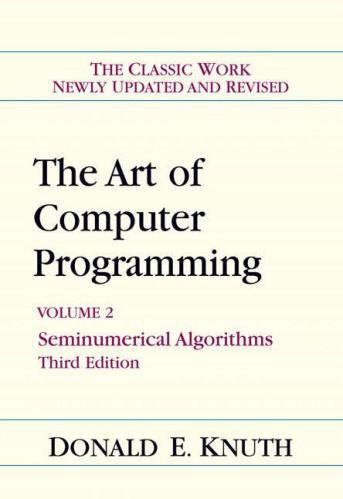
The Art of Computer Programming
by
Donald Ervin Knuth
Published 15 Jan 2001
In other words, there will be no "drift" if the subroutines are properly implemented. > 29. [M25] Give an example to show that the condition bp > 3 is necessary in the previous exercise. > 30. [M30] (W. M. Kahan.) Let f(x) = 1 + x + ¦ ¦ ¦ + x106 = A - xl07)/(l - x) for x < 1, and let g(y) = /((| - y2)C + 3.45y2)) for 0 < y < 1. Evaluate g(y) on one or more pocket calculators, for y = 10~3, 10~4, 10~5, 10~6, and explain all inaccuracies in the results you obtain. (Since most present-day calculators do not round correctly, the results are often surprising. Note that g(e) = 107 - 10491.35e2 + 659749.9625e4 - 30141386.26625e6 + O(e8).) 31. [M25] (U. Kulisch.) When the polynomial 2y2 + 9x4 - y4 is evaluated for x = 408855776 and y = 708158977 using standard 53-bit double-precision floating point arithmetic, the result is « —3.7 x 1019.
…
Dept of Commerce, 1964), for example, we find that 8 of the 28 different physical con- constants given in Table 2.3, roughly 29 percent, have leading digit equal to 1. The decimal values of n! for 1 < n < 100 include exactly 30 entries beginning with 1; so do the decimal values of 2n and of Fn, for 1 < n < 100. We might also try look- looking at census reports, or a Farmer's Almanack (but not a telephone directory). In the days before pocket calculators, the pages in well-used tables of loga- logarithms tended to get quite dirty in the front, while the last pages stayed relatively clean and neat. This phenomenon was apparently first mentioned in print by the astronomer Simon Newcomb [Amer. J. Math. 4 A881), 39-40], who gave good grounds for believing that the leading digit d occurs with probability Iog10(l + 1/d).
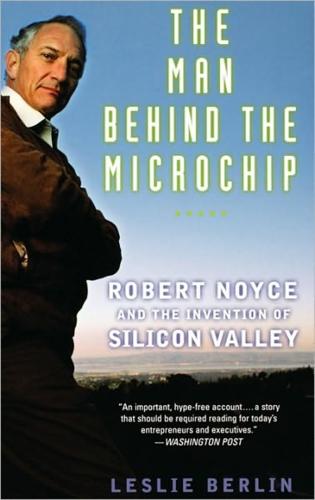
The Man Behind the Microchip: Robert Noyce and the Invention of Silicon Valley
by
Leslie Berlin
Published 9 Jun 2005
Over the next decade, Noyce managed the company, called Fairchild Semiconductor, by teaching himself business skills as he went along. By 1967, Fairchild had 11,000 employees and $12 million in profits. Before the Internet and the World Wide Web and cell phones and personal digital assistants and laptop computers and desktop computers and pocket calculators and digital watches and pacemakers and ATMs and cruise control and digital cameras and motion detectors and video games— before all these, and the electronic heart of all these, is a tiny device called an integrated circuit. The inventor of the first practical integrated circuit, in 1959, was Robert Noyce.

Adaptive Markets: Financial Evolution at the Speed of Thought
by
Andrew W. Lo
Published 3 Apr 2017
Economists think so highly of the Black-Scholes/Merton model that Myron Scholes and Robert C. Merton were awarded the Nobel Prize in Economics for its discovery in 1997 (Fischer Black died two years before). The explosion of the options market is often credited to the rise of the option-pricing pocket calculator in the 1970s. Did Homo sapiens already have the neurological equivalent of an option-pricing calculator in its head? I WANT IT ALL, AND I WANT IT NOW The story, however, isn’t so simple. Financial professionals are familiar with the difference between present value and future value. Most future assets are valued at less than their present (face) value.

Power and Progress: Our Thousand-Year Struggle Over Technology and Prosperity
by
Daron Acemoglu
and
Simon Johnson
Published 15 May 2023
For example, according to most definitions, the global positioning system (GPS) may not be intelligent because it is based on the implementation of a straightforward search algorithm (the A* search algorithm, first devised in 1968). Yet GPS devices do provide a tremendously useful service to humans. Almost no expert would classify pocket calculators as intelligent, but they perform tasks that most humans would find impossible (such as quickly multiplying two seven-digit numbers). Instead of fixating on machine intelligence, we should ask how useful machines are to people, which is how we define machine usefulness (MU). Focusing on MU would guide us toward a more socially beneficial trajectory, especially for workers and citizens.
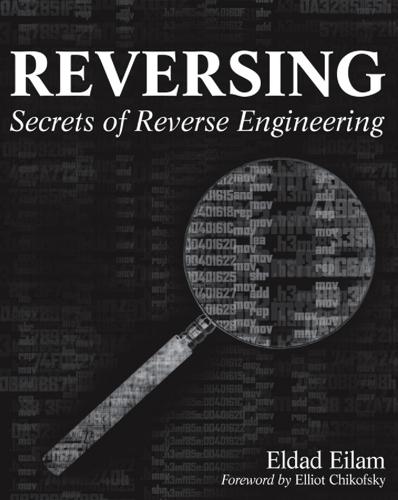
Reversing: Secrets of Reverse Engineering
by
Eldad Eilam
Published 15 Feb 2005
The next section discusses branchless logic, and demonstrates the most common branchless logic sequences. Finally, I’ve included a brief discussion on the impact of working-set tuning on the reversing process for Windows applications. Understanding Low-Level Logic The most basic element in software that distinguishes your average pocket calculator from a full-blown computer is the ability to execute a sequence of logical and conditional instructions. The following sections demonstrate the most common types of low-level logical constructs frequently encountered while 479 480 Appendix A reversing, and explain their exact meanings. I begin by going over the process of comparing two operands in assembly language, which is a significant building block used in almost every logical statement.

Apollo
by
Charles Murray
and
Catherine Bly Cox
Published 1 Jan 1989
This experience turned out to be ideal for planning mission techniques, partly because computer capacity was at the heart of deciding how to run a mission, and partly because the process of designing the displays had been so contentious. Apollo-era computers had severely limited storage—the computer capacity of the mainframes in the Control Center was smaller than that of some of the desktop systems of the 1980s, and the onboard computers in the command and lunar modules had less capacity than some modern pocket calculators. So the competition for room was fierce. “Every time we’d get a new capability in the computer systems, the flight controllers would start laying their requirements on it,” Cliff Charlesworth said. “In short order, we’d overflow the boxes [exceed computer capacity]. And Kraft would get mad.
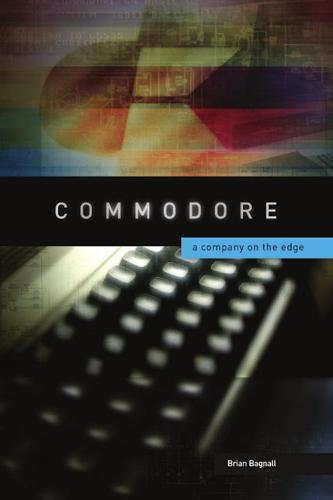
Commodore: A Company on the Edge
by
Brian Bagnall
Published 13 Sep 2005
No company could offer such a complete system at such a low price. The hobbyist market had anticipated and dreaded this moment ever since Commodore acquired MOS Technology. Dan Fylstra, a KIM-1 and eventual PET owner, described the reaction in the February 1978 issue of Byte magazine: …Commodore Business Machines Inc, a well-known maker of pocket calculators, startled everyone in the personal computer industry by announcing its PET computer. … The announcement was greeted with considerable enthusiasm and skepticism, for Commodore obviously was stretching the state of the art in technology, manufacturing and mass distribution. Tramiel wanted Peddle and his team to have the final production model ready for the June CES show.
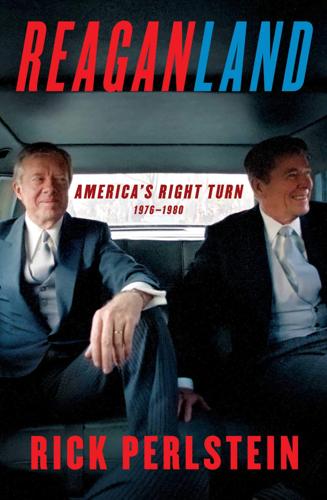
Reaganland: America's Right Turn 1976-1980
by
Rick Perlstein
Published 17 Aug 2020
Paul Weyrich’s Committee for the Survival of a Free Congress even inaugurated its own index, the “Conservative Register,” the sternest of them all: it branded anyone scoring less than fifty-six—meaning two-thirds of Congress—as “Left-Wing.” Armed with this intelligence, a former ACU official revealed, the New Right leaders “sit around with their pocket calculators and go around the table, discussing different candidates; and one will say: ‘We can give $5,000,’ and another will say: ‘We can give $15,000.’ ” The day after Carter’s briefing of the editors at the White House on Panama, Robert Livingston of Louisiana became the third New Right candidate in a row to win a special election, replacing a corrupt Democrat who resigned and becoming the first Republican to represent Baton Rouge since 1874—in a district with only 10 percent Republican registration.
…
Senator Joseph Biden Branko Marcitec, Yesterday’s Man: The Case Against Joe Biden (New York: Verso, 2020), 136. “issue we can’t lose” Clymer, Drawing the Line at the Big Ditch, 56. Howard Phillips said “ ‘Keep the Canal’ Drive On; Conservatives Rally to Cause,” Atlanta Journal and Constitution, August 28, 1977. “Conservative Register” Clymer, Drawing the Line at the Big Ditch, 133. “with their pocket calculators” Alan Crawford, Thunder on the Right: The “New Right” and the Politics of Resentment (New York: Pantheon, 1981), 58. Robert Livingston AP, August 28, 1977. Weyrich bragged “Close to Blocking New Canal Pact, Opponents Claim,” LAT, August 12, 1977. “There is NO Panama Canal!” “Conservatives Map Drive Against the Canal Treaty,” NYT, August 16, 1977.

Darwin's Dangerous Idea: Evolution and the Meanings of Life
by
Daniel C. Dennett
Published 15 Jan 1995
This is the sort of case that shows what would be silly about the preposterous forms of reductionism; of course you can't explain all the patterns that interest us at the level of physics (or chemistry, or any one low level). This is undeniably true of such mundane and unperplexing phenomena as traffic jams and pocket calculators; we should expect it to be true of biological phenomena as well. (For more on this topic, see Dennett 1991b.) Now consider a parallel question in biology, a textbook standard: why do giraffes have long necks? There is one answer that could in principle be "read off" the total Tree of Life, if we had it to look at: Each giraffe has a neck of the length it has because its parents had necks of the lengths they had, and so forth back through the generations.
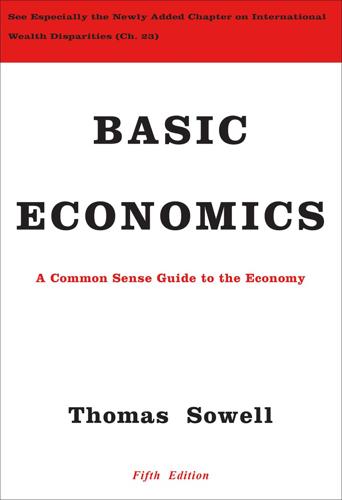
Basic Economics
by
Thomas Sowell
Published 1 Jan 2000
At the beginning of the twentieth century, the national output of the United States did not include any airplanes, television sets, computers or nuclear power plants. At the end of that century, American national output no longer included typewriters, slide rules (once essential for engineers, before there were pocket calculators), or a host of equipment and supplies once widely used in connection with horses that formerly provided the basic transportation of many societies around the world. What then, does it mean to say that the Gross Domestic Product was X percent more in the year 2000 than in 1900, when it consisted largely of very different things at these different times?

I Am Charlotte Simmons: A Novel
by
Tom Wolfe
Published 9 Nov 2004
The room was packed. The surf of what seemed like a thousand enthusiastic conversations rolled over them. Cackles, chirps, and belly laughs erupted above the waves. The waitress, wearing one of the little skillet pins, arrived not with an order pad but with a black plastic instrument that looked like a pocket calculator with an aerial. The menus, coated in clear plastic, must have been fifteen inches tall and were full of color photographs similar to the outsize ones on the wall. After considerable study, Mrs. Amory ordered a fried-chicken dish and asked the waitress to please leave off the skillet-fried hash browns and the deep-fried onion rings.

Palo Alto: A History of California, Capitalism, and the World
by
Malcolm Harris
Published 14 Feb 2023
The home computer project remained a recurring but mostly insubstantial glint in engineers’ eyes.ii But by the mid-1970s, falling chip production prices made it impossible for smaller electronics shops to keep competing with the big semiconductor firms, which could count on a cheap and steady supply of components. One of those firms was the Albuquerque, New Mexico–based MITS, run by one of America’s many postwar boy rocketry enthusiasts, this one named Ed Roberts. He followed the hobby-electronics yellow brick road, from toy rocket lights to kits for pocket calculators and digital clocks, building MITS into a respectable midsize company. But as prices continued to fall and the industry consolidated behind companies such as Texas Instruments and the Fairchildren, MITS and all the firms like it were in trouble. In 1974, the company was $365,000 in debt ($2 million in 2022 value), but Roberts had one advantage: He knew Intel’s forthcoming 8080 chip, significantly cheaper and more powerful than the 8008, was going to deliver a knockout punch.

Dhalgren
by
Samuel R. Delany
Published 31 Dec 1973
Tak grinned, took off his cap, and dropped it on the desk blotter. "I guess I am. But then, that's not too difficult." The military short hair jarred with his unshaven jaw. The desk, except for the cap, was bare. Shelves above it held binoculars, slide rules, drafting compasses and pens, two pocket calculators, French curves and templates, colored pentels, several cut and polished geodes, a row of ornamental daggers on display stands, a pile of plastic parts boxes, a soldering gun… "Hey…" Tak slapped one knee. "I'm gonna make some coffee. Got some canned ham, too. Real good ham. And bread." He stood up and went to a door, hung, like the windows, with tan splints.

A Classless Society: Britain in the 1990s
by
Alwyn W. Turner
Published 4 Sep 2013
In the wake of the Windsor Castle fire, the announcement was rushed forward, but even then it was hardly received with unalloyed approval in all quarters. H.M. THE TAX DODGER, mocked the front page of the Daily Mirror, with a sneering article by Alastair Campbell accompanied by a caricature of the Queen doing her sums on a pocket calculator. The following week an opinion poll commissioned by the Daily Telegraph showed that only a quarter of the population agreed with the statement that ‘the monarchy is something to be proud of’. Something had clearly gone wrong in the relationship between the monarch and her subjects. She noted as much in a speech to commemorate the fortieth anniversary of her accession to the throne: 1992 was, she said, ‘not a year on which I shall look back with undiluted pleasure.
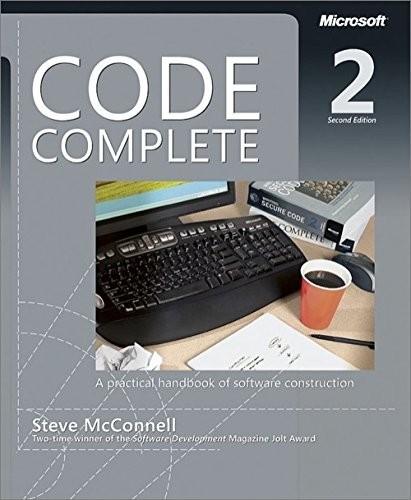
Code Complete (Developer Best Practices)
by
Steve McConnell
Published 8 Jun 2004
If you're locked into the programmer mindset, you'll reason that adding an annual report to a system that already does quarterly reports should be easy. Then you'll pay a programmer to write and debug a time-consuming program that calculates annual profits. If you're not locked into the programmer mindset, you'll pay your secretary to create the annual figures by taking one minute to add up the quarterly figures on a pocket calculator. The exception to this rule applies when the problem is with the computer: compile times are too slow or the programming tools are buggy. Then it's appropriate to state the problem in computer or programmer terms. As Figure 3-5 suggests, without a good problem definition, you might put effort into solving the wrong problem.
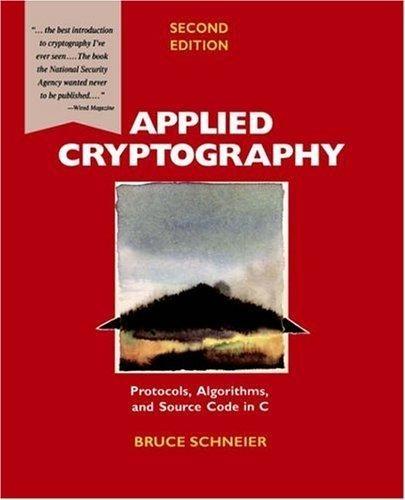
Applied Cryptography: Protocols, Algorithms, and Source Code in C
by
Bruce Schneier
Published 10 Nov 1993
The goal is to develop systems for conditional access, particularly digital payment systems. Payment systems must give legal certainty to everybody at all times and require as little trust as possible—this certainty should not depend on the tamper-resistance of any devices. The basic device for CAFE is an electronic wallet: a small computer that looks something like a pocket calculator. It has a battery, keyboard, screen, and an infrared channel for communicating with other wallets. Every user owns and uses his own wallet, which administers his rights and guarantees his security. A device with a keyboard and screen has an advantage over a smart card; it can operate independent of a terminal.

Surfaces and Essences
by
Douglas Hofstadter
and
Emmanuel Sander
Published 10 Sep 2012
What would it mean to speak of adding a number to itself 2½ times or 1/3 of a time, let alone times or π times? And yet, requiring one of the factors in a multiplication to be an integer should raise suspicions, since everyone knows that multiplying two non-integers is not forbidden; indeed, in school we all learn how to do it, and pocket calculators don’t balk at all at multiplying any two numbers they are given. What on earth would the expression “π × π” mean if at least one of the two factors had to be an integer? The next stumbling block lurking in this definition is the common belief that when one adds b to itself over and over again, the result will always be greater than b.

The Making of the Atomic Bomb
by
Richard Rhodes
Published 17 Sep 2012
Fermi had scalers that counted off boron trifluoride readings with loud clicks and a cylindrical pen recorder that performed a similar function silently, graphing pile intensities in ink on a roll of slowly rotating graph paper. For calculations he relied on his own trusted six-inch slide rule, the pocket calculator of its day. Around midmorning Fermi began the crucial experiment. First he ordered all but the last cadmium rod removed and checked to see if the neutron intensity matched the measurement Anderson had made the night before. With that first comparison Volney Wilson’s team working on the balcony took time to adjust its monitors.

The Prize: The Epic Quest for Oil, Money & Power
by
Daniel Yergin
Published 23 Dec 2008
But the oil men who were his father's clients captured his imagination much more than the academics he saw on campus, and in 1942 he went down to New Mexico to take over a fifteen-hundred-barrel-per-day refinery. He soon moved over to exploration, and became one of the better-known independents in the business. He had the same gift for quick mental arithmetic as Rockefeller and Deterding. In the early days, he could beat a slide rule and, later on, a pocket calculator, and he had a habit in meetings of correcting people on their decimal points. "I was never particularly conscious of the ability," he explained. "The biggest thing it does is to help you discard a lot of things and move on. In negotiations, you can casually allow something that the other guy doesn't understand the importance of.